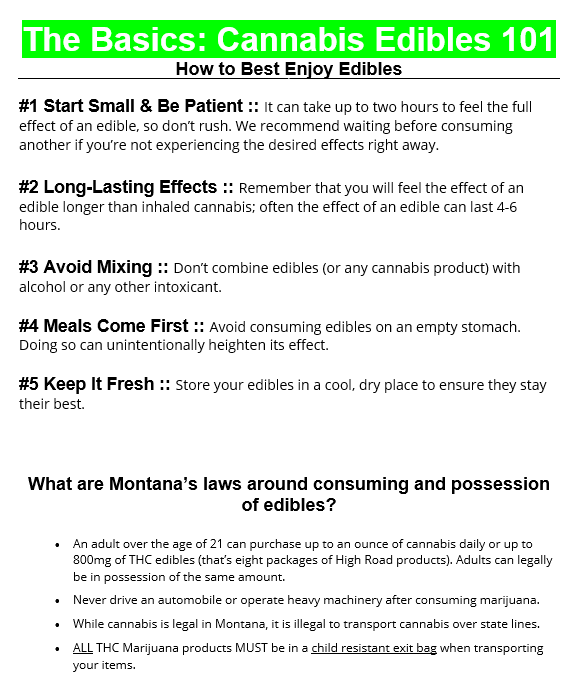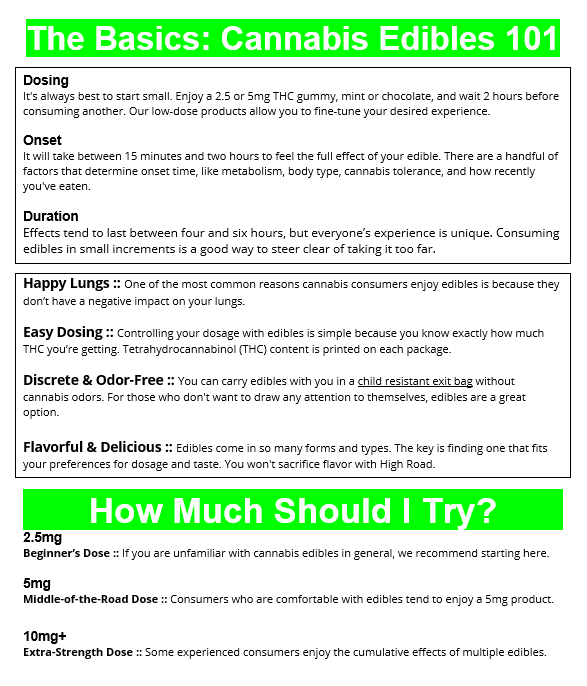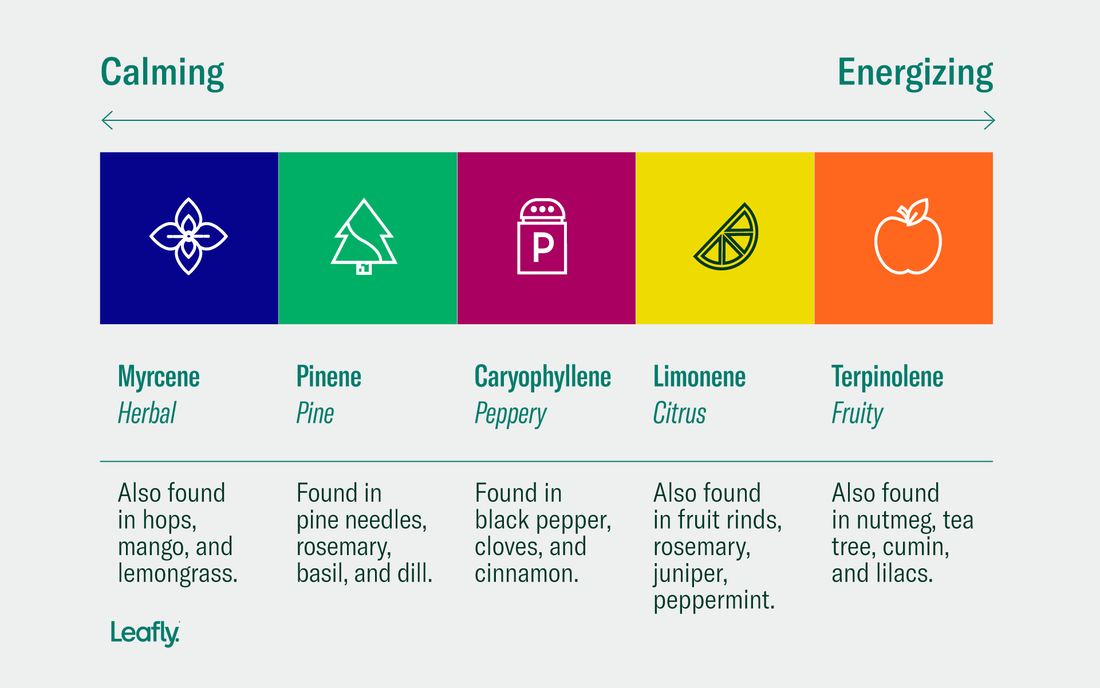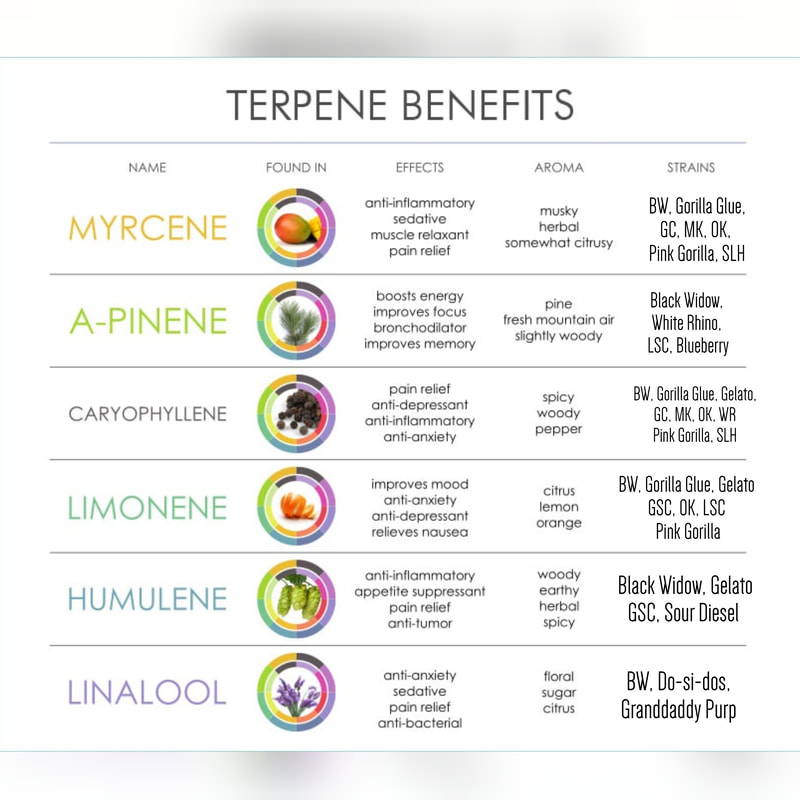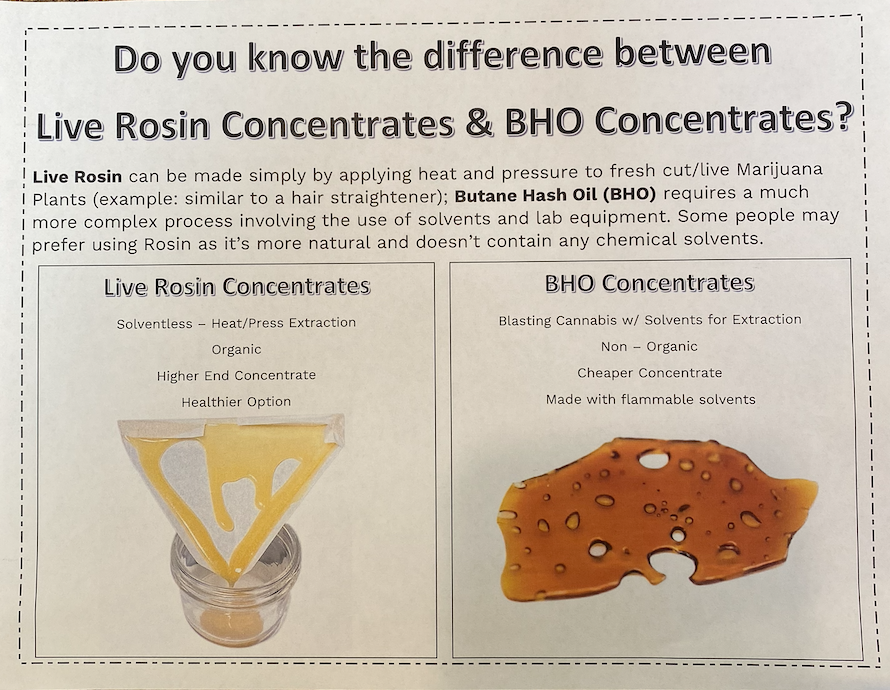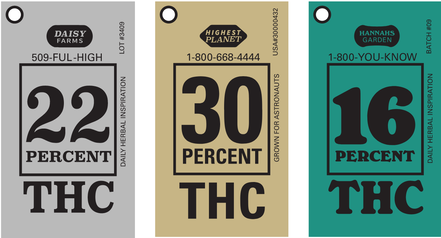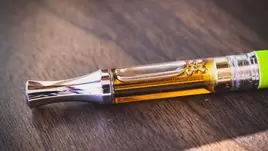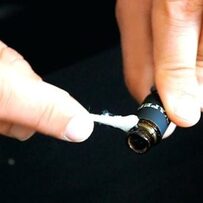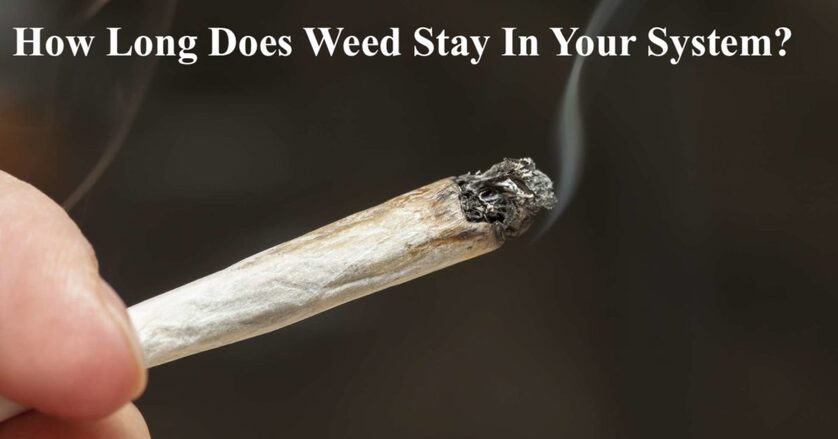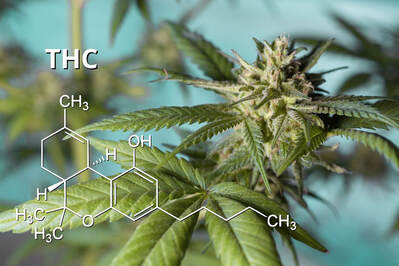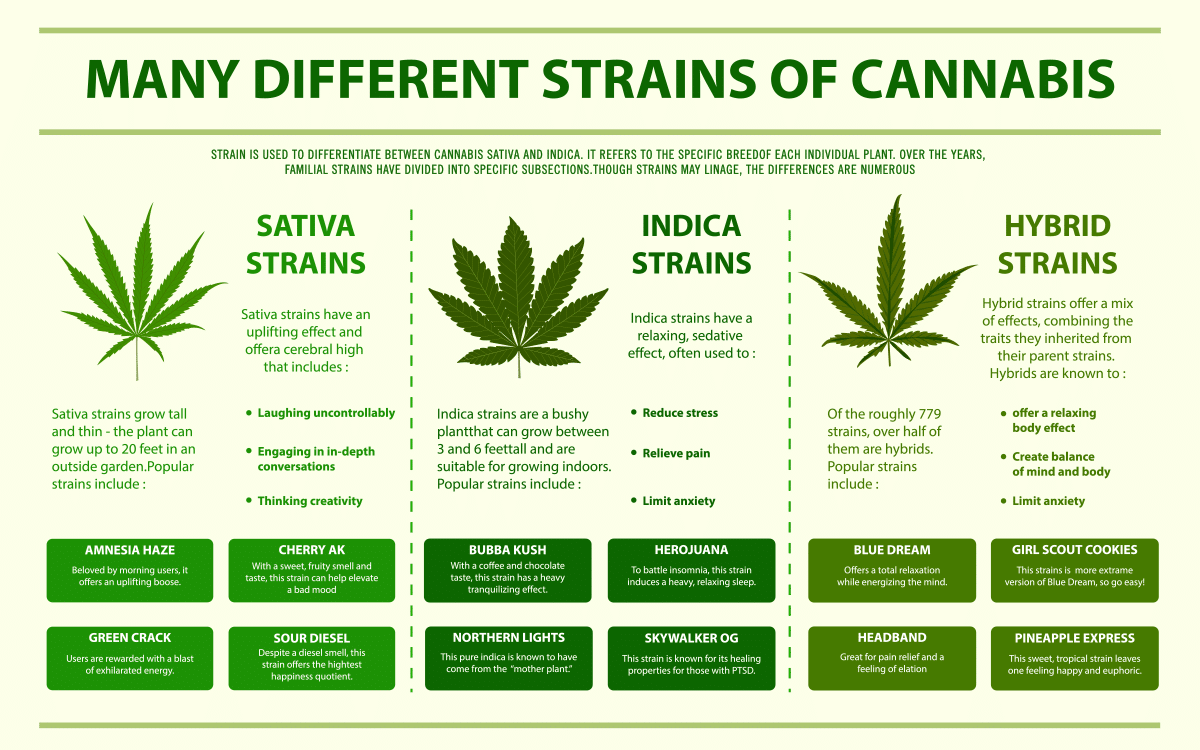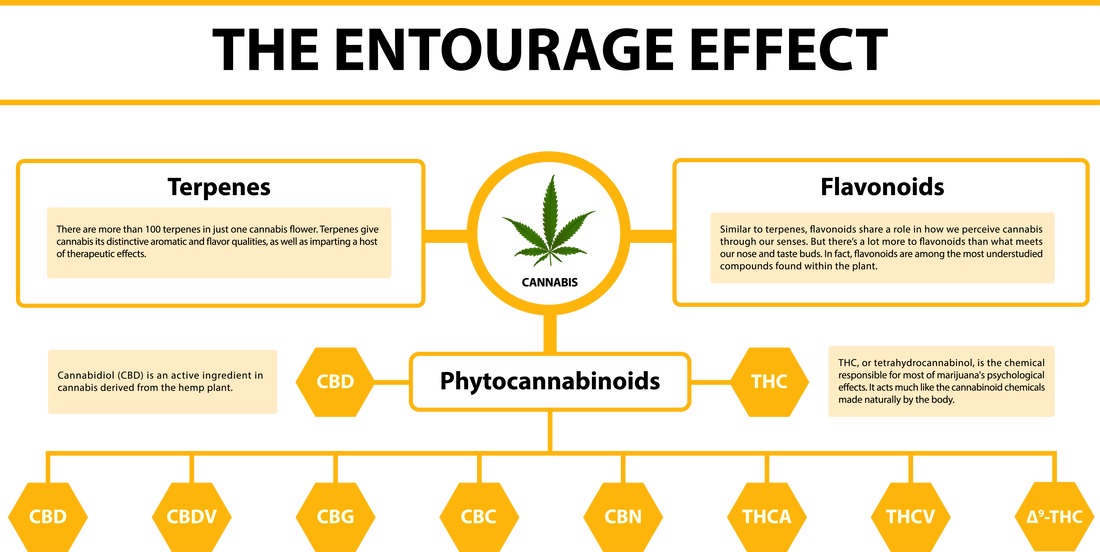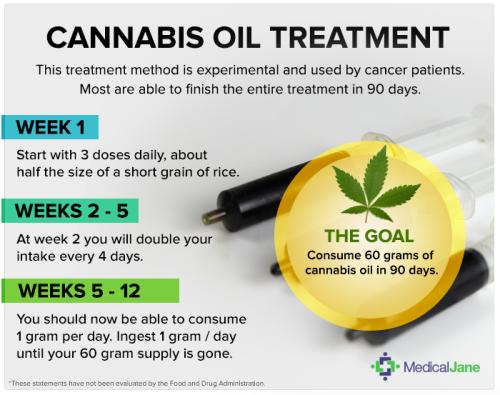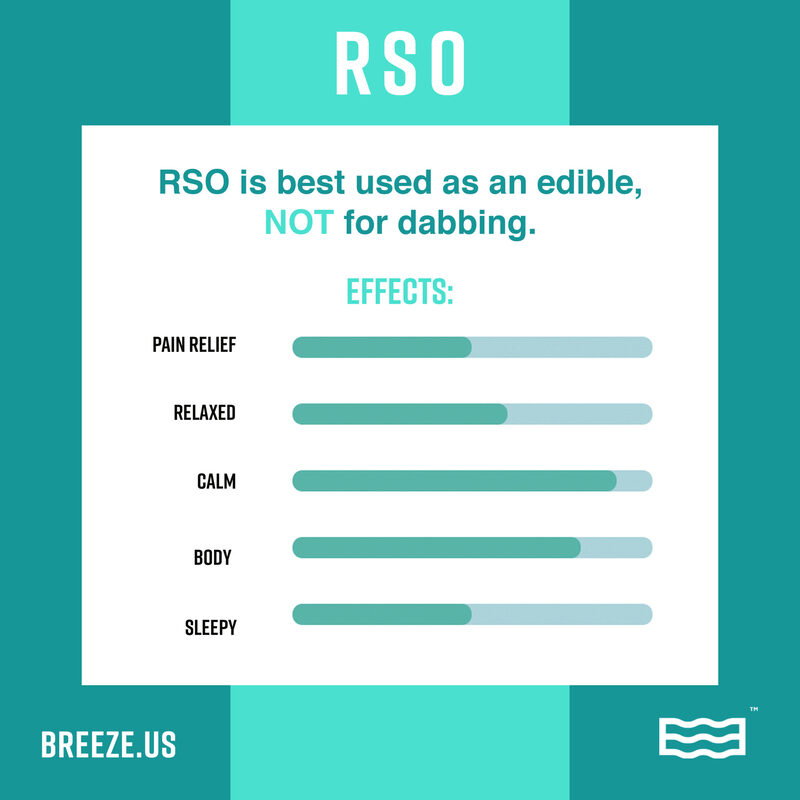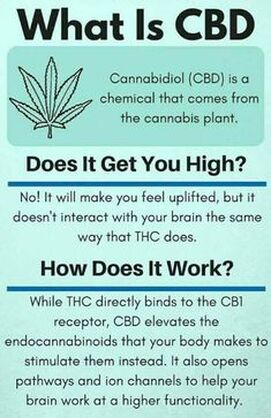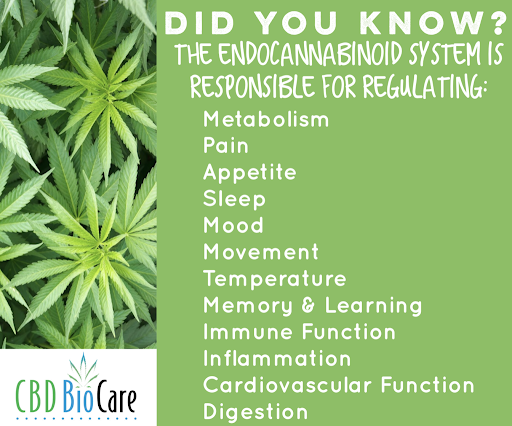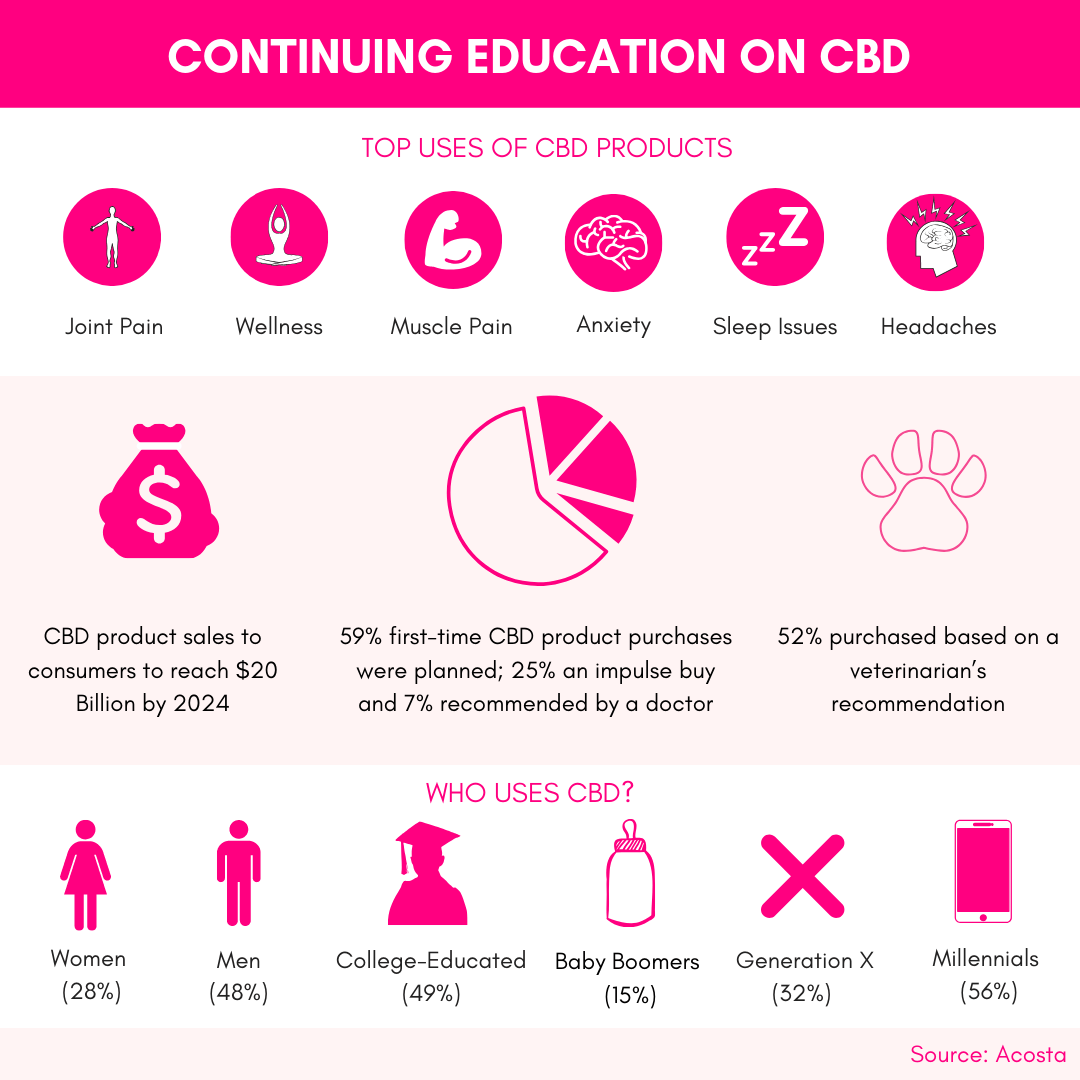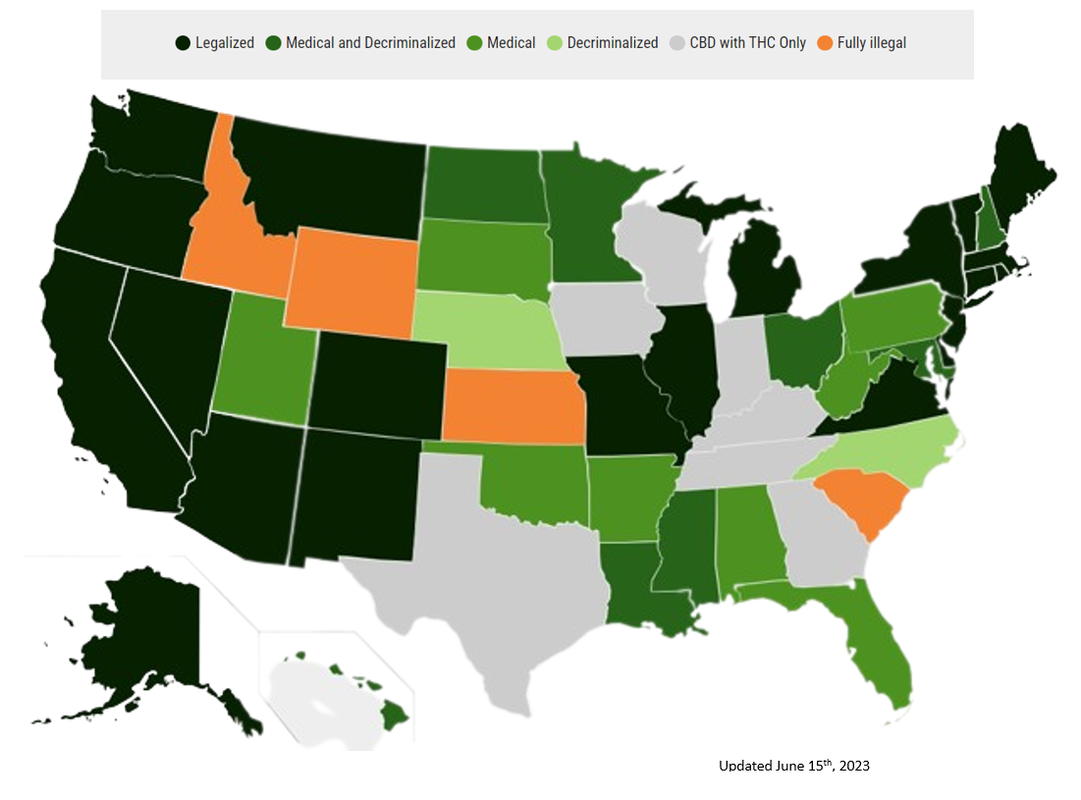Even with 8 years of legal cannabis under our belt, there’s a huge misconception surrounding weed that’s still persistent as ever.
The days of “reefer madness” sensationalism might be behind us, but this pesky myth holds firm in the face of rapidly dissipating stigma and fear.
Yep, we’re talking about THC percentages on weed, and the commonly-held belief among cannabis consumers and detractors alike that these numbers hold valuable information.
LET’S SET THE RECORD STRAIGHT, ONCE AND FOR ALL: THEY DON’T.The reliability of testing? Dubious. And the assumption that high THC content and high potency are synonymous? Flawed.
Of course, if you’re shopping for CBD flower, it’s a little different. You’ll need to look at the numbers to determine THC and CBD ratios.
In any other situation, though? Forget about them.
Using THC percentage as the single determinant of what constitutes good weed is like using fat content as your basis for determining whether or not something is nutritious. You might arrive at the correct conclusion some of the time.
But you’ll be misled more often than not.
IT WORKS FOR ALCOHOL, SO WHY WOULDN’T IT WORK FOR A CANNABIS STRAIN?People rely on “proof” to tell them how drunk they’ll get with alcohol, so it’s logical there should be a similar measure for cannabis. After all, responsible consumption when you’re smoking weed is important.
The problem? “Proof” is a reliable measurement of intoxicating effects. There’s a direct correlation between ABV (alcohol by volume) and how much alcohol enters your bloodstream.
The THC correlation, as we’ll establish, is nowhere near as clearcut.
Alcohol also has consistent potency within a batch. For instance, a fifth of vodka has the same ABV whether it was the first in its batch to be bottled or the last.
We can’t say the same for cannabis. The amount of THC in a strain can vary 10-15% depending on where on the plant the flower was harvested from. Buds on the top of the cannabis plant have the most THC. These numbers decrease the further down on the plant you go.
Producers get to handpick which product they send off to be tested. Unsurprisingly, a lot of them choose buds from the tops of the cannabis plants.
You might see 32% THC on the label, but there’s no guarantee you’ll get nugs from the part of the plant that’s testing that high.
When you consider the unreliability of cannabis testing, the notion that weed today has more THC than it did several decades ago and the fears surrounding “high THC cannabis” prove unfounded.
We really can’t say with certainty that cannabis strains 50 years ago were weaker when we don’t have a sound way to gauge strength.
THE ENTOURAGE EFFECT
The variance of THC percentages within a batch isn’t the only reason to be wary of THC numbers.
Even if it could be measured accurately, THC content doesn’t give you many clues as to how high you’ll get.
We’ll be the first to admit: it seems like it would. If THC is the compound in cannabis that gets you high, then logic follows that the higher the THC percentage, the more potent the flower’s psychoactive effects.
But the truth is, THC isn’t alone in giving cannabis its effects. It’s just one part of the equation.
Cannabis is a complex plant. There are thousands of different cannabinoids, as well as flavonoids, terpenes, and tannins, that come together and interact to shape your cannabis experience.
THC interacts with your body’s unique endocannabinoid system differently depending on which of these other compounds it’s paired with. We call this the entourage effect.
While other cannabinoids remain shrouded in mystery, THC’s psychoactivity is well-established. But by no means is it the lone psychoactive component of cannabis. It’s just the component we currently have the best scientific understanding of.
A strain that’s testing on the lower end, maybe around 12-18%, can get you just as ripped as a strain with 32% total THC on the label. Try it sometime if you don’t believe us….ya know, for science.
WHY PUT THC POTENCY ON THE LABEL, THEN?The short answer is: lawmakers believed it was better than nothing.
Blame decades of prohibition, but we currently know little to nothing about the way most of the active ingredients in cannabis interact with the endocannabinoid system.
THC percentage is the official measure of potency in the cannabis industry because, and ONLY because, a better metric doesn’t exist yet.
Unfortunately, for individuals who suffer from paranoia and avoid high THC flower or high THC strains, this presents a problem. If a strain that’s testing at 32% THC and a strain thats testing at 18% THC can be as strong as the other, how does one shop responsibly?
The answer is simple: Ask for something on the lighter side. If a budtender presents you with an option that has a higher THC percentage than you usually go for, trust their judgement.
Some of the mildest strains we have in the store regularly test at 30% THC, but you’d never guess it based on effects alone.
Perhaps someday there will be a metric of cannabis effects that more accurately portrays what you’re in for when you smoke. But until then, resist the urge to look to THC levels for guidance in our purchasing decision.
IF YOU’VE BEEN USING THC PERCENTAGE AS A WAY TO SHOP, DO YOURSELF AN ENORMOUS FAVOR: STOP. We know it defies logic a little bit. If you were to do that with alcohol, it’d be downright irresponsible.
But alcohol and cannabis are very different substances. To try to gauge their potency in the same way is well-intentioned, but misguided.
Potent weed with potent psychoactive effects comes in all shapes, sizes, and THC levels. So does mild weed.
The key to getting it? Communicate what you’re looking for, and be open-minded.
Ask any budtender, and they’ll tell you: learning about the meaningless of the numbers marks a turning point in their relationship to cannabis.
The days of “reefer madness” sensationalism might be behind us, but this pesky myth holds firm in the face of rapidly dissipating stigma and fear.
Yep, we’re talking about THC percentages on weed, and the commonly-held belief among cannabis consumers and detractors alike that these numbers hold valuable information.
LET’S SET THE RECORD STRAIGHT, ONCE AND FOR ALL: THEY DON’T.The reliability of testing? Dubious. And the assumption that high THC content and high potency are synonymous? Flawed.
Of course, if you’re shopping for CBD flower, it’s a little different. You’ll need to look at the numbers to determine THC and CBD ratios.
In any other situation, though? Forget about them.
Using THC percentage as the single determinant of what constitutes good weed is like using fat content as your basis for determining whether or not something is nutritious. You might arrive at the correct conclusion some of the time.
But you’ll be misled more often than not.
IT WORKS FOR ALCOHOL, SO WHY WOULDN’T IT WORK FOR A CANNABIS STRAIN?People rely on “proof” to tell them how drunk they’ll get with alcohol, so it’s logical there should be a similar measure for cannabis. After all, responsible consumption when you’re smoking weed is important.
The problem? “Proof” is a reliable measurement of intoxicating effects. There’s a direct correlation between ABV (alcohol by volume) and how much alcohol enters your bloodstream.
The THC correlation, as we’ll establish, is nowhere near as clearcut.
Alcohol also has consistent potency within a batch. For instance, a fifth of vodka has the same ABV whether it was the first in its batch to be bottled or the last.
We can’t say the same for cannabis. The amount of THC in a strain can vary 10-15% depending on where on the plant the flower was harvested from. Buds on the top of the cannabis plant have the most THC. These numbers decrease the further down on the plant you go.
Producers get to handpick which product they send off to be tested. Unsurprisingly, a lot of them choose buds from the tops of the cannabis plants.
You might see 32% THC on the label, but there’s no guarantee you’ll get nugs from the part of the plant that’s testing that high.
When you consider the unreliability of cannabis testing, the notion that weed today has more THC than it did several decades ago and the fears surrounding “high THC cannabis” prove unfounded.
We really can’t say with certainty that cannabis strains 50 years ago were weaker when we don’t have a sound way to gauge strength.
THE ENTOURAGE EFFECT
The variance of THC percentages within a batch isn’t the only reason to be wary of THC numbers.
Even if it could be measured accurately, THC content doesn’t give you many clues as to how high you’ll get.
We’ll be the first to admit: it seems like it would. If THC is the compound in cannabis that gets you high, then logic follows that the higher the THC percentage, the more potent the flower’s psychoactive effects.
But the truth is, THC isn’t alone in giving cannabis its effects. It’s just one part of the equation.
Cannabis is a complex plant. There are thousands of different cannabinoids, as well as flavonoids, terpenes, and tannins, that come together and interact to shape your cannabis experience.
THC interacts with your body’s unique endocannabinoid system differently depending on which of these other compounds it’s paired with. We call this the entourage effect.
While other cannabinoids remain shrouded in mystery, THC’s psychoactivity is well-established. But by no means is it the lone psychoactive component of cannabis. It’s just the component we currently have the best scientific understanding of.
A strain that’s testing on the lower end, maybe around 12-18%, can get you just as ripped as a strain with 32% total THC on the label. Try it sometime if you don’t believe us….ya know, for science.
WHY PUT THC POTENCY ON THE LABEL, THEN?The short answer is: lawmakers believed it was better than nothing.
Blame decades of prohibition, but we currently know little to nothing about the way most of the active ingredients in cannabis interact with the endocannabinoid system.
THC percentage is the official measure of potency in the cannabis industry because, and ONLY because, a better metric doesn’t exist yet.
Unfortunately, for individuals who suffer from paranoia and avoid high THC flower or high THC strains, this presents a problem. If a strain that’s testing at 32% THC and a strain thats testing at 18% THC can be as strong as the other, how does one shop responsibly?
The answer is simple: Ask for something on the lighter side. If a budtender presents you with an option that has a higher THC percentage than you usually go for, trust their judgement.
Some of the mildest strains we have in the store regularly test at 30% THC, but you’d never guess it based on effects alone.
Perhaps someday there will be a metric of cannabis effects that more accurately portrays what you’re in for when you smoke. But until then, resist the urge to look to THC levels for guidance in our purchasing decision.
IF YOU’VE BEEN USING THC PERCENTAGE AS A WAY TO SHOP, DO YOURSELF AN ENORMOUS FAVOR: STOP. We know it defies logic a little bit. If you were to do that with alcohol, it’d be downright irresponsible.
But alcohol and cannabis are very different substances. To try to gauge their potency in the same way is well-intentioned, but misguided.
Potent weed with potent psychoactive effects comes in all shapes, sizes, and THC levels. So does mild weed.
The key to getting it? Communicate what you’re looking for, and be open-minded.
Ask any budtender, and they’ll tell you: learning about the meaningless of the numbers marks a turning point in their relationship to cannabis.
By Veronica White- published February 24th, 2022 via www.luxpotshop.com
Vape Pen Care
If your vape is broken or malfunctioning:
We order our vapes from a reputable, US veteran owned business. Our vape pens/batteries come with a lifetime factory warranty. If you are having mechanical issues with your vape that you purchased from us, the manufacturing company will replace it or fix it to the best of their ability.
Call customer service Monday through friday, 10am to 6pm 855-978-6518 or go to www.o2vape.com and fill out the contact form.
Call customer service Monday through friday, 10am to 6pm 855-978-6518 or go to www.o2vape.com and fill out the contact form.
How Montana's 20 percent recreational cannabis sales tax will be divided
By: Edgar Cedillo, Posted at 11:11 AM, Jan 07, 2022 and last updated 4:27 PM, Jan 07, 2022, KBZK News Bozeman
It's been a busy couple of days for marijuana dispensaries as they wrap up the first few days of recreational sales across the state. Sales have already topped in the millions of dollars across Montana but the question now comes of how that 20% sales tax will be split.
When it comes to the 20 percent sales tax on recreational marijuana the state will use $6 million dollars of the tax revenue to go to the Healing and Ending Addiction through recovery and treatment or HEART program.
The goal of the program is aimed at substance abuse prevention, mental health promotion and increasing treatment rather than jail time.
Once those $6 million are surpassed the remaining revenue will be split among several programs across the state.
Fish Wildlife and Parks will get 20 percent for wildlife habitat funding. State Parks, Trails, and Nongame Wildlife Programs will each get 4 percent each. Three percent or $200,000, whichever happens, to be less will go toward veterans and their surviving spouses. $150,000 will go toward crisis treatment training and the remainder of the funds will go toward the General Fund.
When it comes to the 20 percent sales tax on recreational marijuana the state will use $6 million dollars of the tax revenue to go to the Healing and Ending Addiction through recovery and treatment or HEART program.
The goal of the program is aimed at substance abuse prevention, mental health promotion and increasing treatment rather than jail time.
Once those $6 million are surpassed the remaining revenue will be split among several programs across the state.
Fish Wildlife and Parks will get 20 percent for wildlife habitat funding. State Parks, Trails, and Nongame Wildlife Programs will each get 4 percent each. Three percent or $200,000, whichever happens, to be less will go toward veterans and their surviving spouses. $150,000 will go toward crisis treatment training and the remainder of the funds will go toward the General Fund.
Cannabis Compounds May Prevent Coronavirus Infection, Study Finds
Oregon State research found two cannabis compounds, cannabigerolic acid and cannabidiolic acid, could prevent SARS-CoV-2 from infecting human cells
By Linda Gaudino • Published January 13, 2022 • Updated on January 14, 2022 at 10:54 am NBC News, New York

Some of the compounds in cannabis may prevent the entry of the coronavirus into healthy human cells, according to a study published in the Journal of Nature Products.
The research was conducted at Oregon State University and led by Richard van Breemen, a scientist with Oregon State’s Global Hemp Innovation Center, College of Pharmacy, and Linus Pauling Institute.
The study suggests two compounds found in commonly found in hemp -- cannabigerolic acid (CBGA) and cannabidiolic acid (CBDA) -- prevent coronavirus from entering cells that typically line internal organs and skin in a lab setting.
In the study, these acids were able to bind to the SARS-CoV-2 spike protein -- the same target used in COVID-19 vaccines and antibody therapy. Once bound, this step could block a critical step in the pathogen process used to infect the cell.
“That means cell entry inhibitors, like the acids from hemp, could be used to prevent SARS-CoV-2 infection and also to shorten infections by preventing virus particles from infecting human cells. They bind to the spike proteins so those proteins can’t bind to the ACE2 enzyme, which is abundant on the outer membrane of endothelial cells in the lungs and other organs,” said van Breemen in a statement.
Both cannabis compounds were found equally effective against the SARS-CoV-2 alpha and beta variants.
Van Breemen hopes this trend seen in his findings will apply to other existing and future COVID-19 variants.
Hemp, part of the species Cannabis sativa, is one of the cannabis species grown for industrial and medicinal use, including in dietary supplements, animal feed, and cosmetics.
Van Breemen states these compounds can be taken orally. To him, they have the potential to prevent and treat infection by SARS-CoV-2.
“CBDA and CBGA are produced by the hemp plant as precursors to CBD and CBG, which are familiar to many consumers. However, they are different from the acids and are not contained in hemp products," van Breeman noted.
The researchers did not study THC, the psychoactive ingredient in marijuana, due to campus rules prohibiting research using controlled substances. Van Breeman sought to temper public perception that recreational marijuana would have the same effect on preventing a COVID-19 infection as ingesting an oral supplement, noting in an interview with Vice News published Thursday that, when heated, the chemical profile and properties of the compound change.
"The active compounds we've discovered in hemp are cannabidiolic acid, CBD-A, CBG-A, and THC-A," Van Breeman explained to the outlet. "'A' stands for an acid group, a carboxylic acid — this group can be removed upon treatment. So if these hemp products containing these compounds are smoked or vaped, the heat exposure could cause the chemical decomposition or conversion of CBD-A to CBD, CBG-A to CBG, and THC-A to THC. So, we know that CBD, CBG and THC are not active against the virus."
The research was conducted at Oregon State University and led by Richard van Breemen, a scientist with Oregon State’s Global Hemp Innovation Center, College of Pharmacy, and Linus Pauling Institute.
The study suggests two compounds found in commonly found in hemp -- cannabigerolic acid (CBGA) and cannabidiolic acid (CBDA) -- prevent coronavirus from entering cells that typically line internal organs and skin in a lab setting.
In the study, these acids were able to bind to the SARS-CoV-2 spike protein -- the same target used in COVID-19 vaccines and antibody therapy. Once bound, this step could block a critical step in the pathogen process used to infect the cell.
“That means cell entry inhibitors, like the acids from hemp, could be used to prevent SARS-CoV-2 infection and also to shorten infections by preventing virus particles from infecting human cells. They bind to the spike proteins so those proteins can’t bind to the ACE2 enzyme, which is abundant on the outer membrane of endothelial cells in the lungs and other organs,” said van Breemen in a statement.
Both cannabis compounds were found equally effective against the SARS-CoV-2 alpha and beta variants.
Van Breemen hopes this trend seen in his findings will apply to other existing and future COVID-19 variants.
Hemp, part of the species Cannabis sativa, is one of the cannabis species grown for industrial and medicinal use, including in dietary supplements, animal feed, and cosmetics.
Van Breemen states these compounds can be taken orally. To him, they have the potential to prevent and treat infection by SARS-CoV-2.
“CBDA and CBGA are produced by the hemp plant as precursors to CBD and CBG, which are familiar to many consumers. However, they are different from the acids and are not contained in hemp products," van Breeman noted.
The researchers did not study THC, the psychoactive ingredient in marijuana, due to campus rules prohibiting research using controlled substances. Van Breeman sought to temper public perception that recreational marijuana would have the same effect on preventing a COVID-19 infection as ingesting an oral supplement, noting in an interview with Vice News published Thursday that, when heated, the chemical profile and properties of the compound change.
"The active compounds we've discovered in hemp are cannabidiolic acid, CBD-A, CBG-A, and THC-A," Van Breeman explained to the outlet. "'A' stands for an acid group, a carboxylic acid — this group can be removed upon treatment. So if these hemp products containing these compounds are smoked or vaped, the heat exposure could cause the chemical decomposition or conversion of CBD-A to CBD, CBG-A to CBG, and THC-A to THC. So, we know that CBD, CBG and THC are not active against the virus."
A Cancer Survivor’s Guide to Using Cannabis to Cope With Chemotherapy
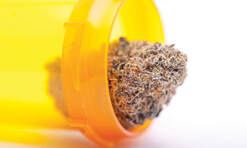
When I was diagnosed with Stage 3 colon cancer, I decided to get my California medical cannabis card and used medicinal cannabis products for effective symptom management. This helped me avoid taking other pharmaceuticals that could have caused further complications during treatment. There are so many things I wish I would have known then that I know now, but my expertise today helps other patients make empowered choices about their cannabis use.
My first experience in a dispensary left me feeling as though I was doing something wrong and had me fearful of asking questions. When I did ask questions, I received vague answers. In turn, I made mistakes in my self-medication and, though not fatal, at times it was uncomfortable and inconvenient.
Part of the disconnect with my dispensary experience was that I didn’t know how to find what worked for me. We have a broad general knowledge of how cannabis — with its many modes of medicating, chemotypes and cultivars — manifests in the body. But human beings are walking chemistry experiments, which means there will be differences in our reactions. We need to find our personal patterns with cannabis (or any ingested substance for that matter) by paying close attention to what we choose and how (or if) it helps to have a better understanding of how to use cannabis as medicine.
Journaling is a great way to keep track of the types of cannabis you’re using and document their effects. What worked, what didn’t work and why — along with how much of the medicine you took — are important things to track and relay to a dispensary during your next visit. The key is to find the lowest dosage in the appropriate ratios that create the desired effect in your body.
Chemotherapy’s side effects take a huge toll on everyday life. The experience of having to get so much sicker in order to get better impacts not only your body, but your mental health as well. Cannabis can help manage symptoms stemming from both the body and mind and, in some instances, can act as a preventative measure against further damage.
Here are some of the more common side effects of chemotherapy and how cannabis interacted with each of them:
(Please note that each type of chemo has its own particular side effects and some of us are more sensitive to these drug treatments than others.)
FatigueCancer treatments can leave you wiped out or overstimulated. Inhaling small amounts of uplifting sativa flowers or using a sativa-based low dosage (2.5 – 5 mg THC) sublingual preparation (dissolved under the tongue) can lift your mood without being too sedating.
InsomniaInsomnia is a common symptom of chemotherapy. If you are having problems getting to sleep, inhaling indica flowers can be helpful. If you are having problems staying asleep, using an indica edible will keep you peaceful overnight. Remember, if you feel a little “stoned over” in the morning, you should take down the volume of the edible. In either case, if there is anxiety around sleep or inflammation with pain, a 1:1 ratio of CBD and THC may be more appropriate.
Infection & Immune System IssuesIt’s important to note that though there have never been fatalities from cannabis use alone, there are significant risks around using untested products, dried flowers in particular, if you have a compromised immune system. Untested products can contain mold, fungus or mildew that might mildly irritate someone with a hardy immune system but can sicken or even kill someone with a compromised immune system. Many states require testing nowadays, but if the state where you live doesn’t, ask companies whose products you want to use if they test and ask to see the reports.
Nausea & VomitingUsing THC in an edible or smokable format during chemo helped me to forgo using anti-nausea drugs after my first day of treatment. For me, that was huge, as the antiemetics proscribed to treat nausea have constipating side effects that, for a colon cancer patient, can be deadly. It’s important to note that though CBD ratios help with nausea, they can also act as an anorectic, which is problematic if you’re already having issues with eating. Eating candied ginger will also help with nausea.
Decreased AppetiteSmoking or eating small amounts of THC will help pique appetite. For patients that are particularly sensitive to THC, I will often recommend trying the non-euphoric cannabinoid THCA. If you do need some CBD in your regimen around meal times, try a 1:1 CBD to THC ratio in either an edible or smokable format because the introduction of THC can help counter CBD’s appetite-reducing properties. I always like to give some non-cannabis advice around this issue as well. The book that saved me while going through treatment is called “The Cancer-Fighting Kitchen” by Rebecca Katz. This book addresses the nutritional challenges of treatment and offers great recipes to address a number of symptoms and get you eating again. I can’t praise it enough.
Anticipatory Nausea & AnxietyThe night before or the day of chemo can cause anxiety and anticipatory nausea. Higher CBD ratios such as 18:1 CBD to THC in an edible or tincture can help take down the jitters and nausea while keeping you clear-headed.
Constipation From Opioid Usage & Opiate WithdrawalAnother challenge during my treatment was using opioids. There were times I needed them for pain management, such as when I had my colon re-sectioned and the tumor removed, or for the intense discomfort I felt from my neuropathy. But the constipating effects were challenging, as were the withdrawal symptoms I felt when I weaned myself off after two weeks of using opioids after surgery. Using THC helped me lower my opiate use by amplifying the analgesic effects of Norco, the medication I was taking, without creating danger. It smoothed out the withdrawal effects as well — the restlessness, pain and sleeplessness disappeared once I started adding cannabis to the mix. Another great tool for avoiding constipation is something you can make at home called “power pudding.” It’s a home remedy involving prunes and bran and you can find many recipes for it online.
Mouth, Tongue & Throat ProblemsChemotherapy targets rapidly dividing cells in the body and does not discern which are cancerous or not. This is why some of us have upset bowels and diarrhea, or experience mouth, tongue and throat discomfort when receiving chemotherapy treatment. Cannabis is great for soothing pain, taking down inflammation and helping in the healing process. Tinctures rich in CBD are especially helpful. However, if you are experiencing mouth irritation, it would not be a good idea to use an alcohol-based tincture, as it will further irritate mucous membranes.
Chemotherapy-Induced Peripheral Neuropathy (CIPN)The platinum salts — including oxaliplatin and cisplatin — used in chemotherapy, along with other chemotherapeutic agents, are known to cause neuropathy in patients. Neuropathy is weakness and pain that one feels, usually in the hands and feet, thanks to damage to peripheral nerves. Some people feel it the first round of chemo, others later in treatment and we all feel it in different intensities and have different recovery times. I am seven years out of chemo and I still suffer from neuropathy. A 2014 study found that CBD prevents neuropathic pain and thermal sensitivity, while not negatively affecting nervous system function or the efficacy of the chemotherapy treatment. Taken before, during and after treatment, patients have reported not getting neuropathy, experiencing it to a lesser degree and bouncing back much faster with less residual pain and numbness.
Skin ChangesChemotherapy can cause dry skin and inflammation from radiation. Luckily, the skin loves cannabis. Topicals are completely non-euphoric, which makes them a great mediator to use at any time and ideal for those who need symptom relief without euphoric effects. Often times, I’ll suggest a patient use the same high-CBD tincture they are taking for anxiety or pain and apply it as a topical for irritation from radiation. CBD takes down the inflammation and THC helps mitigate pain — and collectively, they help the skin heal so much faster. A topical salve with a 1:1 ratio of CBD and THC will heal dry and inflamed skin with great emollient effects.
After chemo, many patients may find they are still experiencing side effects such as anxiety, residual pain and depression. Healing from chemotherapy is a long process. The cannabis knowledge gained through treatment can also help address this phase in symptom management. In addition, be kind to yourself. As survivors, we must take a restorative approach to healing and learn how to be ourselves in a whole new way.
Originally published in the print edition of Cannabis Now.
My first experience in a dispensary left me feeling as though I was doing something wrong and had me fearful of asking questions. When I did ask questions, I received vague answers. In turn, I made mistakes in my self-medication and, though not fatal, at times it was uncomfortable and inconvenient.
Part of the disconnect with my dispensary experience was that I didn’t know how to find what worked for me. We have a broad general knowledge of how cannabis — with its many modes of medicating, chemotypes and cultivars — manifests in the body. But human beings are walking chemistry experiments, which means there will be differences in our reactions. We need to find our personal patterns with cannabis (or any ingested substance for that matter) by paying close attention to what we choose and how (or if) it helps to have a better understanding of how to use cannabis as medicine.
Journaling is a great way to keep track of the types of cannabis you’re using and document their effects. What worked, what didn’t work and why — along with how much of the medicine you took — are important things to track and relay to a dispensary during your next visit. The key is to find the lowest dosage in the appropriate ratios that create the desired effect in your body.
Chemotherapy’s side effects take a huge toll on everyday life. The experience of having to get so much sicker in order to get better impacts not only your body, but your mental health as well. Cannabis can help manage symptoms stemming from both the body and mind and, in some instances, can act as a preventative measure against further damage.
Here are some of the more common side effects of chemotherapy and how cannabis interacted with each of them:
(Please note that each type of chemo has its own particular side effects and some of us are more sensitive to these drug treatments than others.)
FatigueCancer treatments can leave you wiped out or overstimulated. Inhaling small amounts of uplifting sativa flowers or using a sativa-based low dosage (2.5 – 5 mg THC) sublingual preparation (dissolved under the tongue) can lift your mood without being too sedating.
InsomniaInsomnia is a common symptom of chemotherapy. If you are having problems getting to sleep, inhaling indica flowers can be helpful. If you are having problems staying asleep, using an indica edible will keep you peaceful overnight. Remember, if you feel a little “stoned over” in the morning, you should take down the volume of the edible. In either case, if there is anxiety around sleep or inflammation with pain, a 1:1 ratio of CBD and THC may be more appropriate.
Infection & Immune System IssuesIt’s important to note that though there have never been fatalities from cannabis use alone, there are significant risks around using untested products, dried flowers in particular, if you have a compromised immune system. Untested products can contain mold, fungus or mildew that might mildly irritate someone with a hardy immune system but can sicken or even kill someone with a compromised immune system. Many states require testing nowadays, but if the state where you live doesn’t, ask companies whose products you want to use if they test and ask to see the reports.
Nausea & VomitingUsing THC in an edible or smokable format during chemo helped me to forgo using anti-nausea drugs after my first day of treatment. For me, that was huge, as the antiemetics proscribed to treat nausea have constipating side effects that, for a colon cancer patient, can be deadly. It’s important to note that though CBD ratios help with nausea, they can also act as an anorectic, which is problematic if you’re already having issues with eating. Eating candied ginger will also help with nausea.
Decreased AppetiteSmoking or eating small amounts of THC will help pique appetite. For patients that are particularly sensitive to THC, I will often recommend trying the non-euphoric cannabinoid THCA. If you do need some CBD in your regimen around meal times, try a 1:1 CBD to THC ratio in either an edible or smokable format because the introduction of THC can help counter CBD’s appetite-reducing properties. I always like to give some non-cannabis advice around this issue as well. The book that saved me while going through treatment is called “The Cancer-Fighting Kitchen” by Rebecca Katz. This book addresses the nutritional challenges of treatment and offers great recipes to address a number of symptoms and get you eating again. I can’t praise it enough.
Anticipatory Nausea & AnxietyThe night before or the day of chemo can cause anxiety and anticipatory nausea. Higher CBD ratios such as 18:1 CBD to THC in an edible or tincture can help take down the jitters and nausea while keeping you clear-headed.
Constipation From Opioid Usage & Opiate WithdrawalAnother challenge during my treatment was using opioids. There were times I needed them for pain management, such as when I had my colon re-sectioned and the tumor removed, or for the intense discomfort I felt from my neuropathy. But the constipating effects were challenging, as were the withdrawal symptoms I felt when I weaned myself off after two weeks of using opioids after surgery. Using THC helped me lower my opiate use by amplifying the analgesic effects of Norco, the medication I was taking, without creating danger. It smoothed out the withdrawal effects as well — the restlessness, pain and sleeplessness disappeared once I started adding cannabis to the mix. Another great tool for avoiding constipation is something you can make at home called “power pudding.” It’s a home remedy involving prunes and bran and you can find many recipes for it online.
Mouth, Tongue & Throat ProblemsChemotherapy targets rapidly dividing cells in the body and does not discern which are cancerous or not. This is why some of us have upset bowels and diarrhea, or experience mouth, tongue and throat discomfort when receiving chemotherapy treatment. Cannabis is great for soothing pain, taking down inflammation and helping in the healing process. Tinctures rich in CBD are especially helpful. However, if you are experiencing mouth irritation, it would not be a good idea to use an alcohol-based tincture, as it will further irritate mucous membranes.
Chemotherapy-Induced Peripheral Neuropathy (CIPN)The platinum salts — including oxaliplatin and cisplatin — used in chemotherapy, along with other chemotherapeutic agents, are known to cause neuropathy in patients. Neuropathy is weakness and pain that one feels, usually in the hands and feet, thanks to damage to peripheral nerves. Some people feel it the first round of chemo, others later in treatment and we all feel it in different intensities and have different recovery times. I am seven years out of chemo and I still suffer from neuropathy. A 2014 study found that CBD prevents neuropathic pain and thermal sensitivity, while not negatively affecting nervous system function or the efficacy of the chemotherapy treatment. Taken before, during and after treatment, patients have reported not getting neuropathy, experiencing it to a lesser degree and bouncing back much faster with less residual pain and numbness.
Skin ChangesChemotherapy can cause dry skin and inflammation from radiation. Luckily, the skin loves cannabis. Topicals are completely non-euphoric, which makes them a great mediator to use at any time and ideal for those who need symptom relief without euphoric effects. Often times, I’ll suggest a patient use the same high-CBD tincture they are taking for anxiety or pain and apply it as a topical for irritation from radiation. CBD takes down the inflammation and THC helps mitigate pain — and collectively, they help the skin heal so much faster. A topical salve with a 1:1 ratio of CBD and THC will heal dry and inflamed skin with great emollient effects.
After chemo, many patients may find they are still experiencing side effects such as anxiety, residual pain and depression. Healing from chemotherapy is a long process. The cannabis knowledge gained through treatment can also help address this phase in symptom management. In addition, be kind to yourself. As survivors, we must take a restorative approach to healing and learn how to be ourselves in a whole new way.
Originally published in the print edition of Cannabis Now.
South Dakota Officially Cancels Adult-Use Legalization and Delays Medical Pot Program
Published February 11, 2021 by Chris Moore
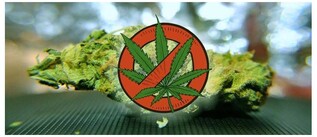
South Dakota's political leaders are making serious headway in their attempts to defeat the cannabis reform bills enacted by voters last fall.
In last year's election, a majority of voters in the Mount Rushmore state chose to legalize both adult-use and medical cannabis. As recently as last week, the state legislature kicked off efforts to create the necessary regulations for these industries, but now those plans are all on hold. This week, a state court struck down the voter-approved adult-use law, and Governor Kristi Noem just announced that the medical marijuana program would be delayed by another year.
Last fall, voters legalized weed on two separate ballot initiatives – one of these created a new law legalizing the use of medical marijuana, and a second amended the state constitution to legalize cannabis sales and use for any adult. But as soon as voters said yes to these initiatives, Noem asked two state cops to file a legal challenge against the adult-use amendment, arguing that it violated the state's single-subject rule.
On Monday, Circuit Judge Christina Klinger struck down the adult-use amendment, ruling that it had “far-reaching effects on the basic nature of South Dakota's governmental system," according to the Associated Press. The judge, who was appointed by Noem in 2019, agreed that the ballot initiative violated the single-subject rule because it combined marijuana business licensing, taxation, and hemp licensing all within one constitutional amendment.
The advocates who campaigned to get these measures onto the ballot have already announced that they will appeal the ruling, but Noem is confident that the state's highest court will take her side in the issue. In a statement, the governor said that Klinger's ruling "protects and safeguards our constitution" and that she is “confident that [the] South Dakota Supreme Court, if asked to weigh in as well, will come to the same conclusion."
Even as she fought to overturn the adult-use law, Noem promised that the state would still move ahead with the medical marijuana program. But this week, the governor announced that she was working to delay the start date for this program for one entire year, to July 1st, 2022. The adult-use legalization amendment would have also prevented lawmakers from interfering with the medical marijuana law, but now that this amendment is off the table, politicians can now delay the medical pot program indefinitely.
This Wednesday, Noem announced that she hoped to delay the new program in order to give lawmakers time to sort out the necessary regulations. “We are working diligently to get [the medical marijuana program] implemented safely and correctly,” Noem said in a statement, AP reports. “The feasibility of getting this program up and running well will take additional time.”
Republican state lawmakers are working on a bill that will officially delay the rollout of the medical marijuana program. This bill would set up a 22-member commission that will work to draft a finalized set of regulations by next January. This delay was informed by discussions with a national cannabis consulting group, which advised that it normally takes a state 14 to 20 months to implement an effective medical pot program.
Melissa Mentele, an activist who led the medical cannabis campaign, told AP that the medical pot proposal is already “a complete policy” that takes into account best practices from other states, though. In her opinion, the program does not need additional revisions, and can be implemented without an additional year of deliberation. Mentele has called politicians' decision to delay the program “harmful to patients and disrespectful to the people of South Dakota,” and Democratic lawmakers agree.
“The fact that they are dragging their feet on it is really frustrating,” said House Democratic Leader Jamie Smith to the Associated Press.
In last year's election, a majority of voters in the Mount Rushmore state chose to legalize both adult-use and medical cannabis. As recently as last week, the state legislature kicked off efforts to create the necessary regulations for these industries, but now those plans are all on hold. This week, a state court struck down the voter-approved adult-use law, and Governor Kristi Noem just announced that the medical marijuana program would be delayed by another year.
Last fall, voters legalized weed on two separate ballot initiatives – one of these created a new law legalizing the use of medical marijuana, and a second amended the state constitution to legalize cannabis sales and use for any adult. But as soon as voters said yes to these initiatives, Noem asked two state cops to file a legal challenge against the adult-use amendment, arguing that it violated the state's single-subject rule.
On Monday, Circuit Judge Christina Klinger struck down the adult-use amendment, ruling that it had “far-reaching effects on the basic nature of South Dakota's governmental system," according to the Associated Press. The judge, who was appointed by Noem in 2019, agreed that the ballot initiative violated the single-subject rule because it combined marijuana business licensing, taxation, and hemp licensing all within one constitutional amendment.
The advocates who campaigned to get these measures onto the ballot have already announced that they will appeal the ruling, but Noem is confident that the state's highest court will take her side in the issue. In a statement, the governor said that Klinger's ruling "protects and safeguards our constitution" and that she is “confident that [the] South Dakota Supreme Court, if asked to weigh in as well, will come to the same conclusion."
Even as she fought to overturn the adult-use law, Noem promised that the state would still move ahead with the medical marijuana program. But this week, the governor announced that she was working to delay the start date for this program for one entire year, to July 1st, 2022. The adult-use legalization amendment would have also prevented lawmakers from interfering with the medical marijuana law, but now that this amendment is off the table, politicians can now delay the medical pot program indefinitely.
This Wednesday, Noem announced that she hoped to delay the new program in order to give lawmakers time to sort out the necessary regulations. “We are working diligently to get [the medical marijuana program] implemented safely and correctly,” Noem said in a statement, AP reports. “The feasibility of getting this program up and running well will take additional time.”
Republican state lawmakers are working on a bill that will officially delay the rollout of the medical marijuana program. This bill would set up a 22-member commission that will work to draft a finalized set of regulations by next January. This delay was informed by discussions with a national cannabis consulting group, which advised that it normally takes a state 14 to 20 months to implement an effective medical pot program.
Melissa Mentele, an activist who led the medical cannabis campaign, told AP that the medical pot proposal is already “a complete policy” that takes into account best practices from other states, though. In her opinion, the program does not need additional revisions, and can be implemented without an additional year of deliberation. Mentele has called politicians' decision to delay the program “harmful to patients and disrespectful to the people of South Dakota,” and Democratic lawmakers agree.
“The fact that they are dragging their feet on it is really frustrating,” said House Democratic Leader Jamie Smith to the Associated Press.
6 Eye-Opening Ways Cannabis Benefits Your Skin
Steph Van De Ven, cannadish.net

There’s no denying that Cannabis is having a major moment. Check out 6 Eye-Opening Ways Cannabis Benefits Your Skin.
Thanks to widespread use in the medical and wellness industries, Cannabis is now a growing trend in the beauty world — and it’s about time.
The need for more natural, sustainable skin care is becoming more than a trend.
Skin-care products are now advertising that they are infused with weed, and the benefits for your wellness are literally endless.
We’ve seen these beauty products trending hard over the last few years:
The type of Cannabis used in most skincare products uses non-psychoactive CBD (cannabidiol).
It is 100% a misconception that you’ll get high from CBD.
THC is the psychoactive compound in marijuana, and even if it does contain trace amounts of THC, cannabis infusions act on a peripheral basis and do not enter the bloodstream.
So you can go right ahead and use CBD skin products with zero psychoactive effects on your body or the risks of failing a drug test too. (in case you were worried about that, wink wink)
1.Cannabis Can Help with Skin Irritation
Cannabis, when applied, topically, may help with localized pain relief while reducing swelling too.
Ever been bitten by a mosquito?
2. Did You Know This About Cannabis?
Applying CBD topically could relax, and soothe skin and can be used to treat rashes, dry skin, and more serious skin conditions like atopic dermatitis (AD).
What’s more, is that the high concentration of polyunsaturated fatty acids present in cannabis can help to relieve the itching and inflammation associated with eczema.
According to research from the National Eczema Association (NEA), cannabinoids bind to receptors in the skin that could help to reduce the symptoms and appearance of AD!
3. Cannabis May Alleviate Symptoms of Psoriasis
Psoriasis is a skin disease that gives you itchy, painful and dry patches on your skin.
According to this study, cannabinoids in cannabis were found to decrease the buildup of dead skin cells – a direct cause of psoriasis.
4. Cannabis Helps With Skin
Aging Ladies and gents, if you’re getting up there in age like me, you’ll try anything to recapture your beautiful youth, right?
Cannabis, when applied topically, has been found to slow the skin aging process!! This couldn’t be more exciting.
Another study revealed that the CBD found in cannabis is a more potent antioxidant than vitamin C or E.
Do you know what helps with fine lines and wrinkles? Vitamin C and E.
CBD also neutralizes free radicals and keeps them from damaging the collagen and elastin in your skin which means tight, young skin people!
5. Cannabis May Help Combat Acne
Cannabis is loaded with essential fatty acids that provide nourishing hydration that is often lacking when you have acne.
Its antibacterial properties may be able to help treat the bacterial infections on the skin which is a major contributor to acne.
Cannabis skin care products are non-comedogenic, meaning it is very unlikely that it will clog pores.
CBD has been to shown to have anti-inflammatory properties, and rich in antioxidants.
6. CBD May Combat Oily Skin
More studies have shown that CBD cannabidiol inhibited and helped regulate lipid production, helping to combat excessively oily skin.
Lastly, this study showed that cannabinoids in cannabis can improve the appearance of acne because they are natural anti-inflammatories.
So just in case you haven’t figured it out yet:
Cannabis is Great For Your Skin!
Thanks to widespread use in the medical and wellness industries, Cannabis is now a growing trend in the beauty world — and it’s about time.
The need for more natural, sustainable skin care is becoming more than a trend.
Skin-care products are now advertising that they are infused with weed, and the benefits for your wellness are literally endless.
We’ve seen these beauty products trending hard over the last few years:
- Argan oil
- Charcoal masks and soaps
- Gold facial masks
- Clay masks
- Facial rollers
- Coconut Oil
- Oil Pulling
- Charcoal toothpaste
The type of Cannabis used in most skincare products uses non-psychoactive CBD (cannabidiol).
It is 100% a misconception that you’ll get high from CBD.
THC is the psychoactive compound in marijuana, and even if it does contain trace amounts of THC, cannabis infusions act on a peripheral basis and do not enter the bloodstream.
So you can go right ahead and use CBD skin products with zero psychoactive effects on your body or the risks of failing a drug test too. (in case you were worried about that, wink wink)
1.Cannabis Can Help with Skin Irritation
Cannabis, when applied, topically, may help with localized pain relief while reducing swelling too.
Ever been bitten by a mosquito?
2. Did You Know This About Cannabis?
Applying CBD topically could relax, and soothe skin and can be used to treat rashes, dry skin, and more serious skin conditions like atopic dermatitis (AD).
What’s more, is that the high concentration of polyunsaturated fatty acids present in cannabis can help to relieve the itching and inflammation associated with eczema.
According to research from the National Eczema Association (NEA), cannabinoids bind to receptors in the skin that could help to reduce the symptoms and appearance of AD!
3. Cannabis May Alleviate Symptoms of Psoriasis
Psoriasis is a skin disease that gives you itchy, painful and dry patches on your skin.
According to this study, cannabinoids in cannabis were found to decrease the buildup of dead skin cells – a direct cause of psoriasis.
4. Cannabis Helps With Skin
Aging Ladies and gents, if you’re getting up there in age like me, you’ll try anything to recapture your beautiful youth, right?
Cannabis, when applied topically, has been found to slow the skin aging process!! This couldn’t be more exciting.
Another study revealed that the CBD found in cannabis is a more potent antioxidant than vitamin C or E.
Do you know what helps with fine lines and wrinkles? Vitamin C and E.
CBD also neutralizes free radicals and keeps them from damaging the collagen and elastin in your skin which means tight, young skin people!
5. Cannabis May Help Combat Acne
Cannabis is loaded with essential fatty acids that provide nourishing hydration that is often lacking when you have acne.
Its antibacterial properties may be able to help treat the bacterial infections on the skin which is a major contributor to acne.
Cannabis skin care products are non-comedogenic, meaning it is very unlikely that it will clog pores.
CBD has been to shown to have anti-inflammatory properties, and rich in antioxidants.
6. CBD May Combat Oily Skin
More studies have shown that CBD cannabidiol inhibited and helped regulate lipid production, helping to combat excessively oily skin.
Lastly, this study showed that cannabinoids in cannabis can improve the appearance of acne because they are natural anti-inflammatories.
So just in case you haven’t figured it out yet:
Cannabis is Great For Your Skin!
EVERYTHING YOU NEED TO KNOW ABOUT CBD OIL FOR DOGS
Christine Colbert, cannadish.net
From CBD oil to dog treats, there is a lot to know.
It’s everywhere. Now that CBD is legal in the United States, it’s gracing every retail countertop, from the corner pharmacy to the pet food store. And even though science is still catching up on the veterinary benefits of CBD, dog owners all over the country are lauding its anecdotal benefits.
With all of the information and misinformation out there about CBD and cannabis in general, it can be a bit overwhelming to sort through. That’s why we’re compiling everything you need to know about CBD oil and CBD dog treats. Obviously, when it comes to your best furry friend, keeping him or her healthy and happy is paramount.
What Science Says About CBD for Your Dog
So, how does CBD affect dogs? Right now, there is a wealth of anecdotal reports saying CBD helps with anxiety, seizures, joint pain, nausea and inflammation. How much of that is actually true? Well, much of what we know about CBD and dogs is purely anecdotal, which means it can’t altogether be trusted. Unfortunately, according this study in Toxicology Communications (2018), there are still some looming gaps in scientific knowledge about CBD and pets.
Right now we know that there are few, if any side effects of CBD in dogs, which is promising. If your dog is taking other medications or experiencing liver problems, CBD may not be a good option for your pup. And some dogs have shown signs of digestive problems after taking CBD, like diarrhea or vomiting.
But, science has shown that there might be benefits of CBD for dogs. Right now, research is suggesting that CBD holds potential for treating epilepsy in dogs as well as arthritis symptoms. These studies are still preliminary, but they pave the way for more research and possibilities surrounding CBD.
Can I Give my Dog Human CBD Oil?
This is a common question that is well worth asking. Be aware that the answer is an unequivocal NO. Do not give your dog human CBD oil. Why? Human CBD oil may contain traces of THC, which is toxic for your dog. Let us repeat: THC is toxic for dogs.
Human CBD oil can also contain other ingredients that are toxic for pets, like xylitol and grapeseed oil. So, when shopping for CBD oil for your pet, it’s important to be extra careful. Otherwise, you might be making an emergency visit to the veterinarian. The last thing you want to do is give your best pal something that will make him or her sick. Marijuana intoxication in dogs is definitely a thing, and it can be very unpleasant, and even deadly, for your pet.
What to Look for in CBD Pet Products
Look for veterinary-safe CBD products, that conduct third party testing. Also, look for a seal from the National Animal Supplement Council (NASC). And just to be sure, check out the list of ingredients and cannabinoid composition. You’ll want to verify that it only contains cannabidiol, or CBD, and nothing else that might be harmful for your dog.
Also, be sure to talk with your veterinarian first before you give your dog CBD. Make sure there are no comorbid issues that could put your pet at risk. In some states, it is illegal for veterinarians to bring up the subject of cannabis with their patients. So don’t be timid — you might have to broach the topic. However, talking with your veterinarian about CBD treatment is important in keeping your dog happy and healthy. A veterinarian can also advise you on the correct dosing of CBD for your pet.
And if you’re thinking of making your own CBD oil for your dog… don’t. Due to widespread regulation issues, there is a pervasive problem regarding mislabeling of cannabinoids. Testing CBD oil on your own for its cannabinoid values is no easy task, either. So unless you have access to a whole hemp plant and you’re not buying CBD flower in a store, don’t make CBD oil for your dog at home. You won’t be able to test it to ensure it doesn’t contain harmful levels of THC.
Unless you’re well-versed in the art of correctly and evenly dosing treats with CBD oil, you’ll want to stick with buying CBD dog treats instead of making them, too. Dogs may not be able to absorb higher levels of CBD without side effects as easily as humans can. Too much CBD could potentially cause digestive issues.
If you are making your own treats and wondering how much CBD to give your dog, studies are showing that the right dose might be around two milligrams per kilogram. However, the research is still young on this topic, which is why it’s a good idea to talk with your veterinarian first.
It’s everywhere. Now that CBD is legal in the United States, it’s gracing every retail countertop, from the corner pharmacy to the pet food store. And even though science is still catching up on the veterinary benefits of CBD, dog owners all over the country are lauding its anecdotal benefits.
With all of the information and misinformation out there about CBD and cannabis in general, it can be a bit overwhelming to sort through. That’s why we’re compiling everything you need to know about CBD oil and CBD dog treats. Obviously, when it comes to your best furry friend, keeping him or her healthy and happy is paramount.
What Science Says About CBD for Your Dog
So, how does CBD affect dogs? Right now, there is a wealth of anecdotal reports saying CBD helps with anxiety, seizures, joint pain, nausea and inflammation. How much of that is actually true? Well, much of what we know about CBD and dogs is purely anecdotal, which means it can’t altogether be trusted. Unfortunately, according this study in Toxicology Communications (2018), there are still some looming gaps in scientific knowledge about CBD and pets.
Right now we know that there are few, if any side effects of CBD in dogs, which is promising. If your dog is taking other medications or experiencing liver problems, CBD may not be a good option for your pup. And some dogs have shown signs of digestive problems after taking CBD, like diarrhea or vomiting.
But, science has shown that there might be benefits of CBD for dogs. Right now, research is suggesting that CBD holds potential for treating epilepsy in dogs as well as arthritis symptoms. These studies are still preliminary, but they pave the way for more research and possibilities surrounding CBD.
Can I Give my Dog Human CBD Oil?
This is a common question that is well worth asking. Be aware that the answer is an unequivocal NO. Do not give your dog human CBD oil. Why? Human CBD oil may contain traces of THC, which is toxic for your dog. Let us repeat: THC is toxic for dogs.
Human CBD oil can also contain other ingredients that are toxic for pets, like xylitol and grapeseed oil. So, when shopping for CBD oil for your pet, it’s important to be extra careful. Otherwise, you might be making an emergency visit to the veterinarian. The last thing you want to do is give your best pal something that will make him or her sick. Marijuana intoxication in dogs is definitely a thing, and it can be very unpleasant, and even deadly, for your pet.
What to Look for in CBD Pet Products
Look for veterinary-safe CBD products, that conduct third party testing. Also, look for a seal from the National Animal Supplement Council (NASC). And just to be sure, check out the list of ingredients and cannabinoid composition. You’ll want to verify that it only contains cannabidiol, or CBD, and nothing else that might be harmful for your dog.
Also, be sure to talk with your veterinarian first before you give your dog CBD. Make sure there are no comorbid issues that could put your pet at risk. In some states, it is illegal for veterinarians to bring up the subject of cannabis with their patients. So don’t be timid — you might have to broach the topic. However, talking with your veterinarian about CBD treatment is important in keeping your dog happy and healthy. A veterinarian can also advise you on the correct dosing of CBD for your pet.
And if you’re thinking of making your own CBD oil for your dog… don’t. Due to widespread regulation issues, there is a pervasive problem regarding mislabeling of cannabinoids. Testing CBD oil on your own for its cannabinoid values is no easy task, either. So unless you have access to a whole hemp plant and you’re not buying CBD flower in a store, don’t make CBD oil for your dog at home. You won’t be able to test it to ensure it doesn’t contain harmful levels of THC.
Unless you’re well-versed in the art of correctly and evenly dosing treats with CBD oil, you’ll want to stick with buying CBD dog treats instead of making them, too. Dogs may not be able to absorb higher levels of CBD without side effects as easily as humans can. Too much CBD could potentially cause digestive issues.
If you are making your own treats and wondering how much CBD to give your dog, studies are showing that the right dose might be around two milligrams per kilogram. However, the research is still young on this topic, which is why it’s a good idea to talk with your veterinarian first.
What Is the Ideal THC Level for Medical Cannabis?
Via thejointblog.com

Medical cannabis features a lot of advantages. But before we dive headfirst into the hazy smoke of medical cannabis, it’s an honest idea to understand what to get on the lookout for. Perhaps one of the most important questions people have is, “What would be the THC level for medical cannabis?”.
But before that question is often answered, we want first to understand what THC is, how it works, what effects it, and, therefore, the condition we would like to treat.
What Is THC?
THC or tetrahydrocannabinol is the chemical compound in charge of most of the psychological effects of medical cannabis. In fact, consistent with the National Institute on Substance Abuse, our body makes its own cannabinoid chemicals. These are the compounds that THC most closely acts like within the body.
THC is one among several compounds found within the resin secreted by cannabis plants from either sativa, indica or bruce banner fast version cannabis seeds. Other compounds, called cannabinoids, also are found within the resin. CBD is another popular cannabinoid we’ll have heard of. This compound is non-psychoactive, which suggests it doesn’t produce an equivalent effect on the brain as THC.
How Does THC Work?
In our brain, cannabinoid receptors are dispersed throughout certain areas of the brain, clustered together most densely within the brain’s parts related to time perception, pleasure, thinking, coordination, and memory. Once we take medical cannabis, the THC in it attaches to those receptors, activating them and impacting our movement, coordination, sensory perception, pleasure, and concentration.
What Do Higher Levels of THC Mean?
The medical cannabis grown today is as potent as ever. In many strains of medical cannabis, THC potencies are often around 20 percent, with some whilst high as 30 percent. Considering that within the 1980s, the potency of cannabis was around two percent; this is often a reasonably big leap.
In low doses, THC creates a euphoric state. If we’re taking an excessive amount, we’ll experience some negative side effects like anxiety and memory impairment. In fact, an excessive amount of THC can even mitigate the medicinal benefits of medical cannabis, so it’s important to know that less is certainly more when considering THC dosing for therapeutic and medicinal effects.
The Ideal Dose For THC
When considering the way to dose THC for medical cannabis, micro dosing is usually recommended. This is often once we start small and work out high to a dose with the consequences we desire, like pain relief, but without a number of the side effects of upper doses of THC, like anxiety.
To micro dose, all we would like to try to do is start with a little dose, as one hit from a vape pen. Wait a minimum of ten minutes and believe how we are feeling. If we think that we would like more, take another hit. Micro dosing may be a good way to work out what dose is therapeutic for us.
Which Cannabis Strains Have The Very Best THC Levels?Different strains of medical cannabis have different amounts of THC in them. Often, we merely have to ask the dispensary or order weed seeds where we buy and what THC level it has upon harvesting if it’s not already clearly marked. If we get a strain with a high THC level and find that it’s not producing the specified medicinal effects, try a strain with a lower THC percentage or a better percentage of CBD. If we don’t feel any impact from what we’re taking, then that’s an honest indication that we should choose a strain with a better THC dose.
THC Level For medical cannabis
THC levels are subjective. That’s because everyone reacts just a touch bit differently to THC, making it a singular experience for every person. As long as we begin with a little dose and work our high, as discussed above, we’ll easily find the range that suits us best and helps to deal with our medical concerns.
Side Notes
Remember that different products can affect us differently, too. Edibles may produce a special reaction at a special THC level than medical cannabis that’s smoked. We ought to always read the label of any medical cannabis product we purchase to ascertain the recommended dose. Begin slowly with a quarter to at least one half the recommended dose the primary time we’re taking it and wait patiently for the consequences to kick in, bearing in mind that it can take up to at least one hour.
But before that question is often answered, we want first to understand what THC is, how it works, what effects it, and, therefore, the condition we would like to treat.
What Is THC?
THC or tetrahydrocannabinol is the chemical compound in charge of most of the psychological effects of medical cannabis. In fact, consistent with the National Institute on Substance Abuse, our body makes its own cannabinoid chemicals. These are the compounds that THC most closely acts like within the body.
THC is one among several compounds found within the resin secreted by cannabis plants from either sativa, indica or bruce banner fast version cannabis seeds. Other compounds, called cannabinoids, also are found within the resin. CBD is another popular cannabinoid we’ll have heard of. This compound is non-psychoactive, which suggests it doesn’t produce an equivalent effect on the brain as THC.
How Does THC Work?
In our brain, cannabinoid receptors are dispersed throughout certain areas of the brain, clustered together most densely within the brain’s parts related to time perception, pleasure, thinking, coordination, and memory. Once we take medical cannabis, the THC in it attaches to those receptors, activating them and impacting our movement, coordination, sensory perception, pleasure, and concentration.
What Do Higher Levels of THC Mean?
The medical cannabis grown today is as potent as ever. In many strains of medical cannabis, THC potencies are often around 20 percent, with some whilst high as 30 percent. Considering that within the 1980s, the potency of cannabis was around two percent; this is often a reasonably big leap.
In low doses, THC creates a euphoric state. If we’re taking an excessive amount, we’ll experience some negative side effects like anxiety and memory impairment. In fact, an excessive amount of THC can even mitigate the medicinal benefits of medical cannabis, so it’s important to know that less is certainly more when considering THC dosing for therapeutic and medicinal effects.
The Ideal Dose For THC
When considering the way to dose THC for medical cannabis, micro dosing is usually recommended. This is often once we start small and work out high to a dose with the consequences we desire, like pain relief, but without a number of the side effects of upper doses of THC, like anxiety.
To micro dose, all we would like to try to do is start with a little dose, as one hit from a vape pen. Wait a minimum of ten minutes and believe how we are feeling. If we think that we would like more, take another hit. Micro dosing may be a good way to work out what dose is therapeutic for us.
Which Cannabis Strains Have The Very Best THC Levels?Different strains of medical cannabis have different amounts of THC in them. Often, we merely have to ask the dispensary or order weed seeds where we buy and what THC level it has upon harvesting if it’s not already clearly marked. If we get a strain with a high THC level and find that it’s not producing the specified medicinal effects, try a strain with a lower THC percentage or a better percentage of CBD. If we don’t feel any impact from what we’re taking, then that’s an honest indication that we should choose a strain with a better THC dose.
THC Level For medical cannabis
THC levels are subjective. That’s because everyone reacts just a touch bit differently to THC, making it a singular experience for every person. As long as we begin with a little dose and work our high, as discussed above, we’ll easily find the range that suits us best and helps to deal with our medical concerns.
Side Notes
Remember that different products can affect us differently, too. Edibles may produce a special reaction at a special THC level than medical cannabis that’s smoked. We ought to always read the label of any medical cannabis product we purchase to ascertain the recommended dose. Begin slowly with a quarter to at least one half the recommended dose the primary time we’re taking it and wait patiently for the consequences to kick in, bearing in mind that it can take up to at least one hour.
Marijuana Improves Quality of Life in Those 60+, Finds New Study
Via thejointblog.com

According to a new study that may come as little surprise to cannabis consumers and advocates, older individuals (those 60+) report improved quality of life and reduced pharmaceutical medications following marijuana therapy. The study, titled Medical cannabis use: Exploring the perceptions and experiences of older adults with chronic conditions, was published in the journal Clinical Gerontologist and was published by the U.S. National Institute of Health.
For the study researchers from Concordia University conducted what is known as a qualitative inquiry on those who are registered medical marijuana patients in California and those who are at least 64.
Participants “reported satisfaction with being able to use medical cannabis to manage symptoms, get relief from pain, and have an improved quality of life all while lessening their dependence on pharmaceutical drugs”, states the study.
The study concludes by stating: “Most of our participants were retired, unemployed, or receiving disability benefits due to a chronic condition, yet they did note improvements in their ability to manage symptoms and productivity. Pain control was consistently described as one of the most important outcomes of medical cannabis use, and this must be considered in relation to public policy, medical symptom management, and long-term care regulations.”
Researchers state that this information “will help clinicians better support older adults desiring to use medical cannabis”, and that this research “will help clinicians learn more about factors impacting medical cannabis use, and the types of information and assistance that may aid older adults in their health and well-being with the use of medical cannabis to treat chronic conditions.”
The study’s full abstract:
Objectives: Although the rate of cannabis use by older adults is increasing more quickly than all other age groups, little is known about the reasons older adults use cannabis and the outcomes they experience. With this research, we investigated older adults’ perceptions and experiences of medical cannabis use to treat and/or manage chronic conditions, specifically as a substitute for prescription drugs.
Methods: Researchers relied on qualitative inquiry in the form of semi-structured, one-on-one interviewing to investigate the phenomenon of medical cannabis use for the management of chronic conditions.
Results: Our findings suggest that older adults are open to medical cannabis as an alternative to pharmaceutical drugs, hopeful with regard to the management of symptoms and pain, and aware of and astute at managing issues related to stigma both from their physicians and family and friends. Furthermore, older adults describe the frustrations with education, awareness, and lack of support with dosing.
Conclusions: Participations found medical cannabis use to be beneficial in managing chronic conditions and alleviating symptoms such as chronic pain. Findings are presented as an interpretation of the participants’ perceptions of their medical cannabis use. Implications for putting medical cannabis use into everyday practice as well as policy implications are considered.
Clinical Implications: This information will help clinicians better support older adults desiring to use medical cannabis. This research will help clinicians learn more about factors impacting medical cannabis use, and the types of information and assistance that may aid older adults in their health and well-being with the use of medical cannabis to treat chronic conditions.
For the study researchers from Concordia University conducted what is known as a qualitative inquiry on those who are registered medical marijuana patients in California and those who are at least 64.
Participants “reported satisfaction with being able to use medical cannabis to manage symptoms, get relief from pain, and have an improved quality of life all while lessening their dependence on pharmaceutical drugs”, states the study.
The study concludes by stating: “Most of our participants were retired, unemployed, or receiving disability benefits due to a chronic condition, yet they did note improvements in their ability to manage symptoms and productivity. Pain control was consistently described as one of the most important outcomes of medical cannabis use, and this must be considered in relation to public policy, medical symptom management, and long-term care regulations.”
Researchers state that this information “will help clinicians better support older adults desiring to use medical cannabis”, and that this research “will help clinicians learn more about factors impacting medical cannabis use, and the types of information and assistance that may aid older adults in their health and well-being with the use of medical cannabis to treat chronic conditions.”
The study’s full abstract:
Objectives: Although the rate of cannabis use by older adults is increasing more quickly than all other age groups, little is known about the reasons older adults use cannabis and the outcomes they experience. With this research, we investigated older adults’ perceptions and experiences of medical cannabis use to treat and/or manage chronic conditions, specifically as a substitute for prescription drugs.
Methods: Researchers relied on qualitative inquiry in the form of semi-structured, one-on-one interviewing to investigate the phenomenon of medical cannabis use for the management of chronic conditions.
Results: Our findings suggest that older adults are open to medical cannabis as an alternative to pharmaceutical drugs, hopeful with regard to the management of symptoms and pain, and aware of and astute at managing issues related to stigma both from their physicians and family and friends. Furthermore, older adults describe the frustrations with education, awareness, and lack of support with dosing.
Conclusions: Participations found medical cannabis use to be beneficial in managing chronic conditions and alleviating symptoms such as chronic pain. Findings are presented as an interpretation of the participants’ perceptions of their medical cannabis use. Implications for putting medical cannabis use into everyday practice as well as policy implications are considered.
Clinical Implications: This information will help clinicians better support older adults desiring to use medical cannabis. This research will help clinicians learn more about factors impacting medical cannabis use, and the types of information and assistance that may aid older adults in their health and well-being with the use of medical cannabis to treat chronic conditions.
Study Finds No Evidence Marijuana Legalization Influences Teen Usage
Via thejointblog.com

According to a new study titled Recreational Marijuana Legalization and Adolescent Use of Marijuana, Tobacco, and Alcohol, state laws that legalize, tax and regulate recreational marijuana use for adults is not associated with an increase in marijuana use by young people. The study was published in the Journal of Adolescent Health, and epublushed by the National Institute of Health.
For the study researchers examined marijuana use data from a nationally representative sample of more than one-million high-school students: The sample was spread over an 18-year period.
There is “no evidence that RML [recreational marijuana legalization] was associated with [an] increased likelihood or level of marijuana use among adolescents”, states the study. “Rather, among adolescents who reported any use of marijuana in the past month, the frequency of use declined by 16 percent after RML.”
Hearing about the findings, NORML’s Deputy Director Paul Armentano said, “These add to the growing body of scientific literature showing that legalization policies can be implemented in a manner that provides access for adults while simultaneously limiting youth access and misuse. Furthermore, these findings stand in sharp contrast to the sensational claims often made by legalization opponents, claims that thus far have proven to be baseless.”
According to a 2019 study published in JAMA Pediatrics “[M]arijuana use among youth may actually decline after legalization for recreational purposes. This latter result is consistent … with the argument that it is more difficult for teenagers to obtain marijuana as drug dealers are replaced by licensed dispensaries that require proof of age.”
The full abstract of the study states:
Purpose: Given the rapid expansion of recreational marijuana legalization (RML) polices, it is essential to assess whether such policies are associated with shifts in the use of marijuana and other substances, particularly for adolescents, who are uniquely susceptible to negative repercussions of marijuana use. This analysis seeks to provide greater generalizability, specificity, and methodological rigor than limited prior evidence.
Methods: Youth Risk Behavior Survey data from 47 states from 1999 to 2017 assessed marijuana, alcohol, cigarette, and e-cigarette use among adolescents (14-18+ years; N = 1,077,938). Associations between RML and adolescent past-month substance use were analyzed using quasi-experimental difference-in-differences zero-inflated negative binomial models.
Results: Controlling for other state substance policies, year and state fixed effects, and adolescent demographic characteristics, models found that RML was not associated with a significant shift in the likelihood of marijuana use but predicted a small significant decline in the level of marijuana use among users (incidence rate ratio = .844, 95% confidence interval [.720-.989]) and a small increase in the likelihood of any e-cigarette use (odds ratio of zero use = .647, 95% confidence interval [.515-.812]). Patterns did not vary over adolescent age or sex, with minimal differences across racial/ethnic groups.
Conclusions: Results suggest minimal short-term effects of RML on adolescent substance use, with small declines in marijuana use and increase in the likelihood of any e-cigarette use. Given the delayed rollout of commercial marijuana sales in RML states and rapid expansion of RML policies, ongoing assessment of the consequences for adolescent substance use and related health and behavioral repercussions is essential.
For the study researchers examined marijuana use data from a nationally representative sample of more than one-million high-school students: The sample was spread over an 18-year period.
There is “no evidence that RML [recreational marijuana legalization] was associated with [an] increased likelihood or level of marijuana use among adolescents”, states the study. “Rather, among adolescents who reported any use of marijuana in the past month, the frequency of use declined by 16 percent after RML.”
Hearing about the findings, NORML’s Deputy Director Paul Armentano said, “These add to the growing body of scientific literature showing that legalization policies can be implemented in a manner that provides access for adults while simultaneously limiting youth access and misuse. Furthermore, these findings stand in sharp contrast to the sensational claims often made by legalization opponents, claims that thus far have proven to be baseless.”
According to a 2019 study published in JAMA Pediatrics “[M]arijuana use among youth may actually decline after legalization for recreational purposes. This latter result is consistent … with the argument that it is more difficult for teenagers to obtain marijuana as drug dealers are replaced by licensed dispensaries that require proof of age.”
The full abstract of the study states:
Purpose: Given the rapid expansion of recreational marijuana legalization (RML) polices, it is essential to assess whether such policies are associated with shifts in the use of marijuana and other substances, particularly for adolescents, who are uniquely susceptible to negative repercussions of marijuana use. This analysis seeks to provide greater generalizability, specificity, and methodological rigor than limited prior evidence.
Methods: Youth Risk Behavior Survey data from 47 states from 1999 to 2017 assessed marijuana, alcohol, cigarette, and e-cigarette use among adolescents (14-18+ years; N = 1,077,938). Associations between RML and adolescent past-month substance use were analyzed using quasi-experimental difference-in-differences zero-inflated negative binomial models.
Results: Controlling for other state substance policies, year and state fixed effects, and adolescent demographic characteristics, models found that RML was not associated with a significant shift in the likelihood of marijuana use but predicted a small significant decline in the level of marijuana use among users (incidence rate ratio = .844, 95% confidence interval [.720-.989]) and a small increase in the likelihood of any e-cigarette use (odds ratio of zero use = .647, 95% confidence interval [.515-.812]). Patterns did not vary over adolescent age or sex, with minimal differences across racial/ethnic groups.
Conclusions: Results suggest minimal short-term effects of RML on adolescent substance use, with small declines in marijuana use and increase in the likelihood of any e-cigarette use. Given the delayed rollout of commercial marijuana sales in RML states and rapid expansion of RML policies, ongoing assessment of the consequences for adolescent substance use and related health and behavioral repercussions is essential.
Factors that Affect Weed Detection Time
Via thejointblog.com
The active ingredient in weed is a chemical substance called THC that when entered the body is absorbed into the bloodstream. The THC is broken down in the liver into metabolites and some may temporarily get stored in the fatty tissues and the drug tests look for the traces of metabolites in the body.
Many cannabis users remain concerned about the issue of how long the weed can be detected in their system. Keeping the constant curiosity in the minds of users, in this article we have gathered an overview on ‘How Long does weed stay in your system?’
Weed is usually detectable in bodily fluids for 1 to 30 days after use; however this time framework may vary according to dose. Also, if used with other drugs, weed may be detectable in hair for several months.
Weed detection windows are based on how much an individual smoke or ingest, as well as how often they do. In general, higher doses and more frequent usage can lead to a longer detection time frame. For instance, in cases of regular uses of weed, the detection windows in blood, hair, urine, saliva, and more may be detectable for several months since the last use. For record, the longest reported detection time was more than 90 days.
Let’s know how the detection system works, how long does it take to weed to break down in your system, and what are the factors that affects the weed to stay longer in your system:
Many cannabis users remain concerned about the issue of how long the weed can be detected in their system. Keeping the constant curiosity in the minds of users, in this article we have gathered an overview on ‘How Long does weed stay in your system?’
Weed is usually detectable in bodily fluids for 1 to 30 days after use; however this time framework may vary according to dose. Also, if used with other drugs, weed may be detectable in hair for several months.
Weed detection windows are based on how much an individual smoke or ingest, as well as how often they do. In general, higher doses and more frequent usage can lead to a longer detection time frame. For instance, in cases of regular uses of weed, the detection windows in blood, hair, urine, saliva, and more may be detectable for several months since the last use. For record, the longest reported detection time was more than 90 days.
Let’s know how the detection system works, how long does it take to weed to break down in your system, and what are the factors that affects the weed to stay longer in your system:
6 Factors that Affect Weed Detection TimeA number of factors affect how long weed stays in your system. Some of these factors, such as your age, gender, and BMI are not related to the drug itself, but it entails how your process and metabolizes the drug depending on these factors.
The other factors that affect weed detection time depends on the quality of weed and how an individual intake it. The frequency and dose of the weed intake are the primary factors. The more frequent you are and the higher dose is, it takes more time to get rid of weed from the system. As far as the quality of the weed is concerned, it suggests that the more potent Weed delivery is, meaning having high THC, it will stay in the system longer. Further, the mode of intake is also a relative factor. Let’s see some of them in detail:
Smoking, Vaping vs. Edibles
The mode of weed intake also impacts the detection time. If the weed is smoked or vaped, the THC level in such cases drops faster in the body than in the case when you ingest the weed. Hence, Edibles take longer time to process or break down in the body and leave your system undetected.
Frequency of Use
It is a proven statistics from experts that says that the length of time on how long the weed stays in your system depends mainly on the factors like how often a person used weed, how much they use or the quantity of their intake, and especially how long they have been using it, meaning if he/she is a regular or just light user.
The regular user can show positive drug test results even after 45 days since last use, while the user on heavy dosage may report positive test up to 90 days since last use.
Metabolism
The metabolism capacity of an individual body also plays a huge role in the weed detection time. The faster your metabolism is the faster weed will leave your body. But the metabolism is affected by many factors such as age, physical activity, and certain health conditions.
Gender
Gender also is a crucial factor in detecting the weed remains in your body. A female body tends to have higher levels of body fat and hence their body often metabolizes THC at a slightly slower rate than their male counterparts.
Hydration
Dehydrated body is one of the factors to prolong the time framework for weed detection. When you are dehydrated the body has more concentrations of THC in the body. If you hydrate yourself completely by drinking water, it will somehow dilute the THC level. The hydrated body surely won’t make you pass a drug test, however it is likely to give you another retake test chance.
Body Mass Index (BMI)
THC metabolites are often stored in the fat cells in your body, so the higher your body fat (or BMI) will be, the slower you will likely be able to metabolize and excrete the weed.
How long is it detectable via drug testing?
Drug tests measure cannabis and its by-products, or metabolites. While the effect of weed goes away soon the metabolites remain as a trace to indicate the intake of weed.
Blood testing: Weed tends to get detected in the bloodstream within seconds of intake and the metabolites remain in there for days. Usually it is detectable in blood for 1-2 days but in some cases it’s been detected even after 25 days.
The time framework in other testing are:
Conclusion
Weed may stay in the body system for several days or for several months since last use. There is no accurate detection theory as it all depends on the sensitivity of the test used, and other factors as aforementioned.
The other factors that affect weed detection time depends on the quality of weed and how an individual intake it. The frequency and dose of the weed intake are the primary factors. The more frequent you are and the higher dose is, it takes more time to get rid of weed from the system. As far as the quality of the weed is concerned, it suggests that the more potent Weed delivery is, meaning having high THC, it will stay in the system longer. Further, the mode of intake is also a relative factor. Let’s see some of them in detail:
Smoking, Vaping vs. Edibles
The mode of weed intake also impacts the detection time. If the weed is smoked or vaped, the THC level in such cases drops faster in the body than in the case when you ingest the weed. Hence, Edibles take longer time to process or break down in the body and leave your system undetected.
Frequency of Use
It is a proven statistics from experts that says that the length of time on how long the weed stays in your system depends mainly on the factors like how often a person used weed, how much they use or the quantity of their intake, and especially how long they have been using it, meaning if he/she is a regular or just light user.
The regular user can show positive drug test results even after 45 days since last use, while the user on heavy dosage may report positive test up to 90 days since last use.
Metabolism
The metabolism capacity of an individual body also plays a huge role in the weed detection time. The faster your metabolism is the faster weed will leave your body. But the metabolism is affected by many factors such as age, physical activity, and certain health conditions.
Gender
Gender also is a crucial factor in detecting the weed remains in your body. A female body tends to have higher levels of body fat and hence their body often metabolizes THC at a slightly slower rate than their male counterparts.
Hydration
Dehydrated body is one of the factors to prolong the time framework for weed detection. When you are dehydrated the body has more concentrations of THC in the body. If you hydrate yourself completely by drinking water, it will somehow dilute the THC level. The hydrated body surely won’t make you pass a drug test, however it is likely to give you another retake test chance.
Body Mass Index (BMI)
THC metabolites are often stored in the fat cells in your body, so the higher your body fat (or BMI) will be, the slower you will likely be able to metabolize and excrete the weed.
How long is it detectable via drug testing?
Drug tests measure cannabis and its by-products, or metabolites. While the effect of weed goes away soon the metabolites remain as a trace to indicate the intake of weed.
Blood testing: Weed tends to get detected in the bloodstream within seconds of intake and the metabolites remain in there for days. Usually it is detectable in blood for 1-2 days but in some cases it’s been detected even after 25 days.
The time framework in other testing are:
- Urine testing: Light to Regular users: 3 to more than 30 days
- Hair testing: up to 3-months
- Saliva testing: Light users: 1-3 days, Regular users: 1-29 days
Conclusion
Weed may stay in the body system for several days or for several months since last use. There is no accurate detection theory as it all depends on the sensitivity of the test used, and other factors as aforementioned.
Study Shows Cannabis is Useful for Long-Term Pain Management
|
A recent study taking place in Israel looked at how effective medical cannabis can be at treating chronic pain, with an emphasis on long-term pain management use.
The study, originally published in The European Journal of Pain and conducted by researchers with University of Haifa, looked at patients over the course of one year and examined and measured how cannabis worked with their chronic pain conditions and how much relief they received. It checked in with users at one three, six, nine, and twelve months after the treatment started to see how patients were doing with their cannabis treatment.
“At one-year, average pain intensity declined from baseline by 20 percent. All other parameters improved by 10 to 30 percent,” the study reported. “A significant decrease of 42 percent from baseline in morphine equivalent daily dosage of opioids was also observed. Reported adverse effects were common but mostly non-serious.” Reports of adverse effects declined over the course of the study period.”
Another Study, A Consistent FindingOf course, this is not entirely new information. It backs up what other studies have found, which is that cannabis can help with long term pain relief and reduction of opiate use, as patients rely on cannabis instead of more dangerous treatment options. However, there are some things about the study that are unique.
“This study is novel in identifying possible predictors for treatment success, including normal to long sleep duration, lower BMI and lower depression scores,” the study explains in detail. “In contrast to current beliefs the diagnosis of neuropathic pain predicts a less favorable outcome. These findings provide physicians with new data to support decision making on recommendations for MC treatment.”
And, as the study points out, while these numbers have been observed before, it’s still controversial whether or not cannabis can truly and effectively be used for pain management. The question-based approach of this study was meant to assess the long-term effects of cannabis and pain, instead of only short-term, observable results.
Overall, the “real-world” aspects of the study, relying on reporting in by people on their own pain, shows that medical cannabis use definitely has an impact on pain, although the study also reveals that it can be connected to non-serious side effects, driving impairment while medicating with cannabis.
Authors of the study concluded: “This prospective, comprehensive and large-scale cohort demonstrated an overall mild to modest long-term improvement of all investigated measures, including pain, associated symptoms and importantly, reduction in opioid (and other analgesics) use. It seems likely that MC [medical cannabis] treatment can be safe for most patients.”
“This prospective study provides further evidence for the effects of MC on chronic pain and related symptoms, demonstrating an overall mild to modest long-term improvement of the tested measures and identifying possible predictors for treatment success.”
While this study is still not the definitive word on how cannabis impacts pain management, it provides even more evidence that cannabis does in fact help long-term with pain, and that it is a viable alternative to other, more dangerous, pain management methods.
The study, originally published in The European Journal of Pain and conducted by researchers with University of Haifa, looked at patients over the course of one year and examined and measured how cannabis worked with their chronic pain conditions and how much relief they received. It checked in with users at one three, six, nine, and twelve months after the treatment started to see how patients were doing with their cannabis treatment.
“At one-year, average pain intensity declined from baseline by 20 percent. All other parameters improved by 10 to 30 percent,” the study reported. “A significant decrease of 42 percent from baseline in morphine equivalent daily dosage of opioids was also observed. Reported adverse effects were common but mostly non-serious.” Reports of adverse effects declined over the course of the study period.”
Another Study, A Consistent FindingOf course, this is not entirely new information. It backs up what other studies have found, which is that cannabis can help with long term pain relief and reduction of opiate use, as patients rely on cannabis instead of more dangerous treatment options. However, there are some things about the study that are unique.
“This study is novel in identifying possible predictors for treatment success, including normal to long sleep duration, lower BMI and lower depression scores,” the study explains in detail. “In contrast to current beliefs the diagnosis of neuropathic pain predicts a less favorable outcome. These findings provide physicians with new data to support decision making on recommendations for MC treatment.”
And, as the study points out, while these numbers have been observed before, it’s still controversial whether or not cannabis can truly and effectively be used for pain management. The question-based approach of this study was meant to assess the long-term effects of cannabis and pain, instead of only short-term, observable results.
Overall, the “real-world” aspects of the study, relying on reporting in by people on their own pain, shows that medical cannabis use definitely has an impact on pain, although the study also reveals that it can be connected to non-serious side effects, driving impairment while medicating with cannabis.
Authors of the study concluded: “This prospective, comprehensive and large-scale cohort demonstrated an overall mild to modest long-term improvement of all investigated measures, including pain, associated symptoms and importantly, reduction in opioid (and other analgesics) use. It seems likely that MC [medical cannabis] treatment can be safe for most patients.”
“This prospective study provides further evidence for the effects of MC on chronic pain and related symptoms, demonstrating an overall mild to modest long-term improvement of the tested measures and identifying possible predictors for treatment success.”
While this study is still not the definitive word on how cannabis impacts pain management, it provides even more evidence that cannabis does in fact help long-term with pain, and that it is a viable alternative to other, more dangerous, pain management methods.

Study Suggests Cannabis May Alleviate Symptoms of Obsessive-Compulsive DisorderA
BY THOMAS EDWARD
OCTOBER 15, 2020
Via Hightimes.com
Inhaling cannabis may yield a temporary relief from symptoms of obsessive-compulsive disorder, according to a new study out this month.
The study, conducted by researchers with Washington State University and published in the Journal of Affective Disorders, suggests that medical cannabis could serve as a viable treatment from those affected by OCD. The researchers worked with 87 individuals self-identifying with obsessive-compulsive disorder. The participating patients then “tracked the severity of their intrusions, compulsions, and/or anxiety immediately before and after 1,810 cannabis use sessions spanning a period of 31 months,” according to an abstract of the study.
“Patients reported a 60% reduction in compulsions, a 49% reduction in intrusions, and a 52% reduction in anxiety from before to after inhaling cannabis. Higher concentrations of CBD and higher doses predicted larger reductions in compulsions,” the researchers wrote. “The number of cannabis use sessions across time predicted changes in intrusions, such that later cannabis use sessions were associated with smaller reductions in intrusions. Baseline symptom severity and dose remained fairly constant over time.”
“Using a large dataset of medical cannabis users self-medicating for symptoms of OCD, we found that for the vast majority of cannabis use sessions individuals reported reductions in intrusions [unwanted thoughts or impulses], compulsions, and anxiety. … [R]esults indicated that after inhaling cannabis, ratings of intrusions were reduced by 49 percent, compulsions by 60 percent, and anxiety by 52 percent,” they continued, as quoted by a blog published over at NORML. They concluded by offering that the study suggests “inhaled cannabis may acutely reduce symptoms of OCD,” while noting that, collectively, the “results indicate that cannabis may have short-term, but not long-term beneficial effects on symptoms of OCD.”
Issues With The StudyThe authors, pointing to a dearth of research on the effects of cannabis on symptoms stemming from obsessive-compulsive disorder, said they sought out to discover three things in their research: “ 1) examine whether symptoms of OCD are significantly reduced after inhaling cannabis, 2) examine predictors (gender, dose, cannabis constituents, time) of these symptom changes and 3) explore potential long-term consequences of repeatedly using cannabis to self-medicate for OCD symptoms, including changes in dose and baseline symptom severity over time.”
They also offered up a caveat to their findings, noting that the 87 participants were “self-selected, self-identified as having OCD, and there was no placebo control group.”
Nevertheless, NORML’s Deputy Director Paul Armentano hailed the findings as yet another encouraging development in the growing body of cannabis research.
“Few studies have assessed the potential efficacy of cannabis for the mitigation of symptoms of OCD. As such, these findings, though somewhat limited by the study’s design, indicate that cannabis – and, in particular, varieties high in CBD – holds promise as a therapeutic option for OCD patients and should be further examined in a more rigorously designed controlled setting,” Armentano said.
According to the Anxiety and Depression Association of America, obsessive-compulsive disorder affects “40 million adults in the United States age 18 and older, or 18.1% of the population every year.” A 2015 study found that CBD had demonstrated an efficacy in reducing the behaviors related to a host of disorders, including OCD.
BY THOMAS EDWARD
OCTOBER 15, 2020
Via Hightimes.com
Inhaling cannabis may yield a temporary relief from symptoms of obsessive-compulsive disorder, according to a new study out this month.
The study, conducted by researchers with Washington State University and published in the Journal of Affective Disorders, suggests that medical cannabis could serve as a viable treatment from those affected by OCD. The researchers worked with 87 individuals self-identifying with obsessive-compulsive disorder. The participating patients then “tracked the severity of their intrusions, compulsions, and/or anxiety immediately before and after 1,810 cannabis use sessions spanning a period of 31 months,” according to an abstract of the study.
“Patients reported a 60% reduction in compulsions, a 49% reduction in intrusions, and a 52% reduction in anxiety from before to after inhaling cannabis. Higher concentrations of CBD and higher doses predicted larger reductions in compulsions,” the researchers wrote. “The number of cannabis use sessions across time predicted changes in intrusions, such that later cannabis use sessions were associated with smaller reductions in intrusions. Baseline symptom severity and dose remained fairly constant over time.”
“Using a large dataset of medical cannabis users self-medicating for symptoms of OCD, we found that for the vast majority of cannabis use sessions individuals reported reductions in intrusions [unwanted thoughts or impulses], compulsions, and anxiety. … [R]esults indicated that after inhaling cannabis, ratings of intrusions were reduced by 49 percent, compulsions by 60 percent, and anxiety by 52 percent,” they continued, as quoted by a blog published over at NORML. They concluded by offering that the study suggests “inhaled cannabis may acutely reduce symptoms of OCD,” while noting that, collectively, the “results indicate that cannabis may have short-term, but not long-term beneficial effects on symptoms of OCD.”
Issues With The StudyThe authors, pointing to a dearth of research on the effects of cannabis on symptoms stemming from obsessive-compulsive disorder, said they sought out to discover three things in their research: “ 1) examine whether symptoms of OCD are significantly reduced after inhaling cannabis, 2) examine predictors (gender, dose, cannabis constituents, time) of these symptom changes and 3) explore potential long-term consequences of repeatedly using cannabis to self-medicate for OCD symptoms, including changes in dose and baseline symptom severity over time.”
They also offered up a caveat to their findings, noting that the 87 participants were “self-selected, self-identified as having OCD, and there was no placebo control group.”
Nevertheless, NORML’s Deputy Director Paul Armentano hailed the findings as yet another encouraging development in the growing body of cannabis research.
“Few studies have assessed the potential efficacy of cannabis for the mitigation of symptoms of OCD. As such, these findings, though somewhat limited by the study’s design, indicate that cannabis – and, in particular, varieties high in CBD – holds promise as a therapeutic option for OCD patients and should be further examined in a more rigorously designed controlled setting,” Armentano said.
According to the Anxiety and Depression Association of America, obsessive-compulsive disorder affects “40 million adults in the United States age 18 and older, or 18.1% of the population every year.” A 2015 study found that CBD had demonstrated an efficacy in reducing the behaviors related to a host of disorders, including OCD.
Montana Gets Ready to License the Recreational Cannabis Industry
Montana officials are making plans for the future of legal cannabis in their state.
BY ADDISON HERRON-WHEELER
VIA Hightimes.com
NOVEMBER 16, 2020
Montana made recreational cannabis legal this past election, and now, they’ve begun the process of licensing, already looking ahead to the future of the recreational industry. According to the Montana Department of Revenue, the state is currently planning on being able to make licenses available by October of next year, a little less than a year from now and a quick start for the industry. I-190, the new cannabis regulation initiative, establishes a legal, regulated cannabis industry in the state. “On November 3, 2020, Montana voters approved initiatives regarding the sale, possession and taxation of marijuana for adults 21 and over,” the department claims in a special message on the new initiative that they have posted on their website. Per Initiative 190, the department will begin accepting applications for necessary licenses by October 1, 2021. “Under I-190, the Montana Department of Revenue will license and regulate the cultivation, transportation and sale of marijuana and marijuana-infused products, and will inspect premises where marijuana is cultivated or sold.”
This new branch of the Department of Revenue will be in charge of all things legal cannabis, which, as other legal states will attest to, is no small task. From the first stages of cultivation all the way through legal sales, there are many aspects of the industry that must be regulated. “There’s a lot of work ahead before the first legal sale of non-medical marijuana in Montana, and before the first license is issued,” said Gene Walborn, director of the department, in a conversation with NBC Montana about the newly accepted regulations. “We look forward to working with the public and all interested parties as we develop guidelines around this new industry to move it forward, while also protecting public safety and raising revenue for the state of Montana.”
In addition to being responsible for overseeing the cultivation, transportation, and sale of all products, the Department will also handle inspections of cultivation sites and the 20 percent sales tax that will be added to all legal cannabis products. This new industry can potentially bring in a lot of new revenue to the state. “We anticipate that the Legislature will address the initiative during the legislative session beginning January 4, 2021, the message on the initiative claims regarding the timeline. Limitations on Licensing For the time being, licenses will be very limited. Only those who are already licensed as providers for the Montana Medical Marijuana Program can apply for the licenses that will be up for grabs, at least for the first 12 months that the industry exists. However, all of the information for the fledgling cannabis industry is not yet hammered out. The upcoming legislative session will give the Montana Legislature more time to work out details of Montana cannabis. More information about rules and license procedures is on the way. More details on the new program are available through the official montana.gov site. While this industry is still very much in its infancy, many possibilities are on the horizon for the state of Montana.
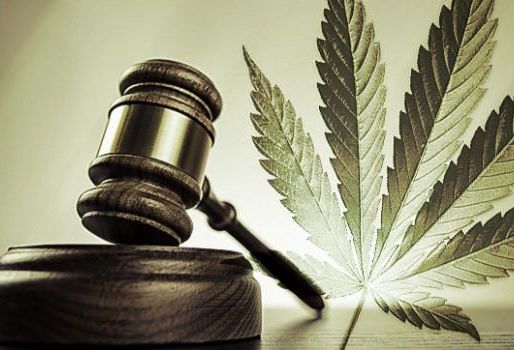
Montana just voted to legalize marijuana. Here's what happens next.
Max Savage Levenson, November 3, 2020
Congratulations, Montana! After a contentious rife with rancor, Montana voters have legalized recreational cannabis via Initiative 190. Montanans also passed I-190's necessary companion, Constitutional Initiative 118, which amends the state constitution to set the legal age of cannabis consumption at 21. Both measures gained favor with roughly 60% of voters.
Here's whats happening next.
Is marijuana legal for adults right now?
Not quite yet-but very soon.
When is it legal to possess weed?
New Years day. Montana residents will be allowed to possess, use, and grow marijuana on January 1st, 2021. More specifically: Montana adults will be legally able to celebrate the new year by lighting up a legal joint, spliff, vape, or bong, on January 1, 2021 at 12:01 a.m.
How much can I possess?
Every adult 21 or older may legally possess up to one ounce of cannabis flower, and up to eight grams of cannabis concentrates. Home cannabis growers may possess up to four mature plants and four seedlings per individual, with a maximum of eight plants per household.
Can retail marijuana stores advertise?
Not in the traditional sense. Retail cannabis stores can't advertise in local newspapers or on TV.
When can I legally buy marijuana?
About a year from now. Recreational sales are scheduled to start in Montana in Jan. 2022
Can I grow cannabis at home?
Yes. Starting Jan. 1, 2021, adults may possess up to four mature plants per individual, with a maximum of eight plants per household.
Will there be new retail marijuana shops?
Probably, but not for a couple of years. To help currently operating medical marijuana providers gain a foothold in the adult-use retail market, initiative 190 institutes a one year moratorium on new license for out of state companies. Furthermore, when that moratorium expires, those out of state operators will only be able to enter the market with a small grow canopy.
Will marijuana be taxed?
Yes, adult-use cannabis will be taxed at a flat rate of 20%
Is there a sentence expungement process?
Yes. Individuals with non violent cannabis records can begin applying for expungement through the Department of Revenue. Individuals currently behind bars for cannabis-related offenses that are deemed legal under Initiative 190 can also petition to have their sentences reduced.
Max Savage Levenson, November 3, 2020
Congratulations, Montana! After a contentious rife with rancor, Montana voters have legalized recreational cannabis via Initiative 190. Montanans also passed I-190's necessary companion, Constitutional Initiative 118, which amends the state constitution to set the legal age of cannabis consumption at 21. Both measures gained favor with roughly 60% of voters.
Here's whats happening next.
Is marijuana legal for adults right now?
Not quite yet-but very soon.
When is it legal to possess weed?
New Years day. Montana residents will be allowed to possess, use, and grow marijuana on January 1st, 2021. More specifically: Montana adults will be legally able to celebrate the new year by lighting up a legal joint, spliff, vape, or bong, on January 1, 2021 at 12:01 a.m.
How much can I possess?
Every adult 21 or older may legally possess up to one ounce of cannabis flower, and up to eight grams of cannabis concentrates. Home cannabis growers may possess up to four mature plants and four seedlings per individual, with a maximum of eight plants per household.
Can retail marijuana stores advertise?
Not in the traditional sense. Retail cannabis stores can't advertise in local newspapers or on TV.
When can I legally buy marijuana?
About a year from now. Recreational sales are scheduled to start in Montana in Jan. 2022
Can I grow cannabis at home?
Yes. Starting Jan. 1, 2021, adults may possess up to four mature plants per individual, with a maximum of eight plants per household.
Will there be new retail marijuana shops?
Probably, but not for a couple of years. To help currently operating medical marijuana providers gain a foothold in the adult-use retail market, initiative 190 institutes a one year moratorium on new license for out of state companies. Furthermore, when that moratorium expires, those out of state operators will only be able to enter the market with a small grow canopy.
Will marijuana be taxed?
Yes, adult-use cannabis will be taxed at a flat rate of 20%
Is there a sentence expungement process?
Yes. Individuals with non violent cannabis records can begin applying for expungement through the Department of Revenue. Individuals currently behind bars for cannabis-related offenses that are deemed legal under Initiative 190 can also petition to have their sentences reduced.
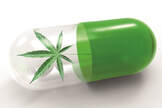
Please note, we are both a recreational and medical marijuana dispensary open to anyone 21 and over. We do not sell to minors without a valid montana medical marijuana card and a parent or guardian present. We encourage all of our current Montana Medical Marijuana cardholders to continue carrying a MMMP card and continue to consume medical grade cannabis for optimal relief.
Contact us: 406-228-4202
Monday through Saturday 10am to 8pm
Sunday 10am to 5pm
Monday through Saturday 10am to 8pm
Sunday 10am to 5pm

